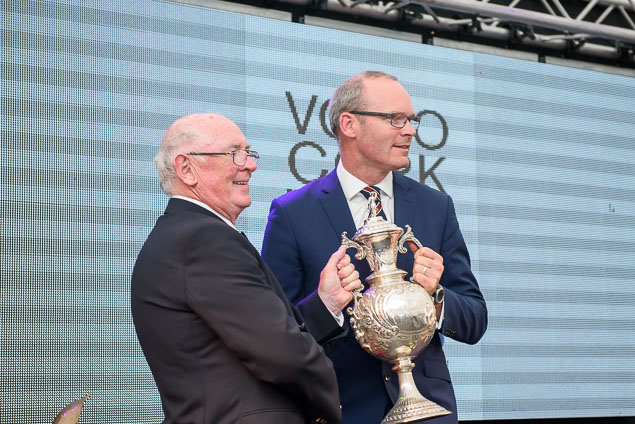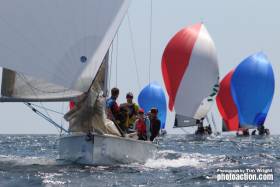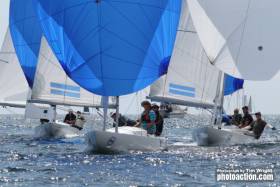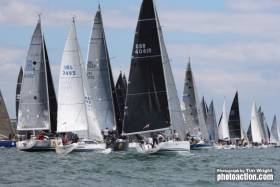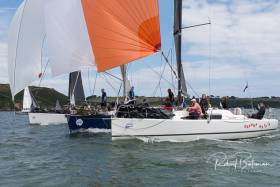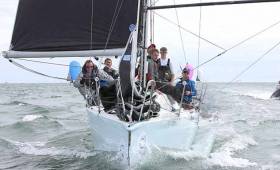Displaying items by tag: Cork Week
If you set out to explain to a stranger to sailing everything that has been going on afloat and ashore at Volvo Cork Week 2018 (and we refer only to the official events), then you’d find yourself warbling away until Christmas and beyond writes W M Nixon.
Admittedly it may often seem like that in this comment section in any case. But in the matter of Cork Week in all its manifestations over the years, we carry a lot of baggage, having raced in the very early first mini-version which was staged in 1970 as part of the Royal Cork’s Quarter Millennial celebrations.
Following that, after 1974 when the RCYC opened the first stage of its new marina, the club could put on the welcome in a big way, and fresh possibilities were revealed with hosting ISORA Week 1976 at Crosshaven. Thanks in part to that, from 1978 onwards, the biennial RCYC Cork Week was born.
At its height in terms of numbers, the fleets were prodigious. But that was before the age of a cash-rich time-poor society, when doing anything for more than four days is seen as being too much of the long haul, with life today lived as a tasting menu of sports and recreations, changing almost from day to day and almost certainly from one weekend to the next.
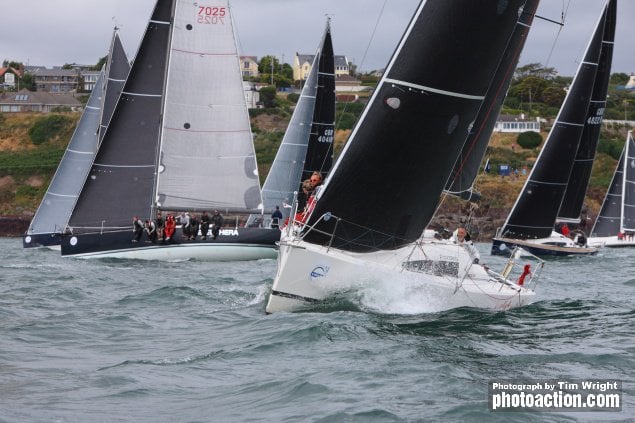 Classic Cork conditions – Class I race seawards
Classic Cork conditions – Class I race seawards
As well, for cruiser-racers, the “Ryanair effect” has surely played a role in reducing active numbers in Ireland. Back in the day when Cork Week was young, only an elite few kept their boats in the Med. It cost a lot to get there, and facilities were relatively sparse.
Yet now, if you get to a harbour in Croatia or Northwest Spain or Malta or wherever via one of the many cheap flights, you might well find more Irish cruiser-racers in active use than you do at home. There are also those who have copped on to the fact that the government-subsidised marinas in France (thanks to its heavily-taxed citizens) offer extremely good value. And like all those other places mentioned, the very fact of being on your boat in those distant places means you really are on holiday, whereas at home, even when on a boat it’s difficult to drop life’s everyday hassle.
Then, of course, the weather is another factor, with us now having to deal with the notion that too much “good” weather is actually very bad for Ireland and her economy. People managed to elude going into work in the recent heatwave, while our agricultural industry is much distressed. The fact is, the last thing we need is a Mediterranean climate, and if you want to sail in one, it’s much better that you have to go there to find it.
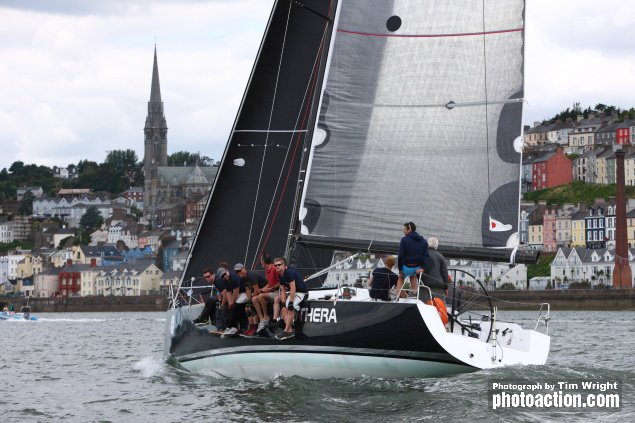 Frank Whelan’s Grand Soleil 44 from Greystones SC is an impressive looking machine, and she finished the Week in impressive style with the Class I win. Boat captain Paddy Barnwell told Afloat 'A combination of Olympic and windward leeward really suited the boat and crew on the last day. The crew pulled liked dogs and really smashed it!
Frank Whelan’s Grand Soleil 44 from Greystones SC is an impressive looking machine, and she finished the Week in impressive style with the Class I win. Boat captain Paddy Barnwell told Afloat 'A combination of Olympic and windward leeward really suited the boat and crew on the last day. The crew pulled liked dogs and really smashed it!
But in this time of rapid change, you have to makes some allowances for those of us who knew Cork Week when it was the liveliest sailing show in Europe. In the early 1990s, we’d a 35ft cruiser-racer which really did the business of being able to race and cruise, and when we went to Cork Week it was in the expectation of living on board, and somehow making the boat race-ready each morning.
We rather looked down our noses at those hyper-keen owners who rented a house in the village to accommodate their crew, and kept their boat in a stripped-out full-on racing conditions. Nevertheless, when I woke up one morning and found that there were eleven people sleeping aboard a boat which had only seven berths, there was a feeling that maybe things were going a bit too far. But we grabbed breakfast, piled superfluous gear onto the pontoon, and went out to race in heavy weather, getting fifth out of 25 in a reasonably competitive class.
Then it was ashore to hit the scene in the compound, the complete regatta village. We’d all sorts of passes to allow us to go everywhere within it, but when I had to go out the front gate on the Friday night, the security man asked me did I realize that everything indicated I hadn’t gone beyond the confines of the compound for the entire week. After due thought, it didn’t really surprise me at all.
But these days, we seem to have a Volvo Cork Week which, for the early part of the week at least, had two distinct focal points. The main scene is still in Crosshaven, but for one night – Tuesday – the glitzy bit was further up the harbour in the time-hallowed surroundings of the Naval Base in Haulbowline, where they held a Gala Dinner for all the Beaufort Cup competitors.
 Even when you’ve been racing round the Fastnet Rock the night before, the full dress uniform does wonders for the look of a man – Beaufort Cup winner Commandant Barry Byrne (left) and one of the visiting skippers at the Gala Dinner on Haulbowline Photo Bob Bateman
Even when you’ve been racing round the Fastnet Rock the night before, the full dress uniform does wonders for the look of a man – Beaufort Cup winner Commandant Barry Byrne (left) and one of the visiting skippers at the Gala Dinner on Haulbowline Photo Bob Bateman
As they’d been racing round the Fastnet the night before, maybe it was excusable that some of the civilian participants made a rather feeble effort at complying with the black tie requirement. But the naval, military and air force types cleaned up a treat with some very classy dress uniforms in evidence, stylishly reinforcing the evening’s purpose of celebrating camaraderie and the challenges of offshore racing in surroundings about as different as you can get from the spooky atmosphere which surrounds the Fastnet Rock as night comes on.
The next day, it was back to the racing with the pressure on for those afloat, but there was also an opportunity to see how our predictions from a week ago were holding up, and as the series progressed through its early days, the results were very encouraging for the soothsaying department.
But that said, you’d need to have been a stubborn contrarian to expect anything other than success for Rory Fekkes’ little all-black F’nGr8 from Carrickfergus in Class 4, which came to Cork laden with successes from the Scottish Series in May, the Howth Wave regatta in June, and the Bangor Town Regatta at the beginning of July.
 The little black wonder – Rory Fekkes Quarter Tonner F’nGr8 from Carrickergus SC was bought for just eight thousand snots, and transformed into a champion
The little black wonder – Rory Fekkes Quarter Tonner F’nGr8 from Carrickergus SC was bought for just eight thousand snots, and transformed into a champion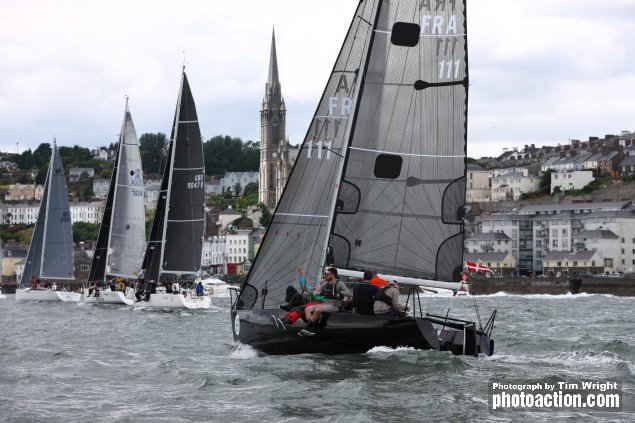 Rory Fekkes in the Harbour Race – the complete new suit of sails probably cost a good bit more than the bargain boat did in the first place
Rory Fekkes in the Harbour Race – the complete new suit of sails probably cost a good bit more than the bargain boat did in the first place
The boy has form, as tipsters would say – his father Paul was International GP14 World Champion in 1991, and Rory is no slouch himself on the dinghy circuit. But with this little keelboat which he bought in need of TLC for 8,000 sterling, he seems to have found the perfect outlet for Northern Irish technological ingenuity, and she has given a performance of almost chilling excellence in a class which is by no means lacking in boats of known high performance, discarding a sixth to finish first at 9.0pts, out of sight on James Matthews’ Kinsale-based Dubois Quarter Tonner Diamond on 26 points, with Paddy Kyne’s X-302 Maximus from Howth just one point behind in third.
From northern waters, we also mentioned Jonathan Anderson’s impressive J/122 El Grand Senor from Scotland as one to watch in Class 1, and she likewise has risen to the challenge. But a boat from within Strangford Lough which had to be content with third in class at Bangor, Jay Colville’s First 40 Forty Licks, was also tipped and she found new speed at Cork with the likes of Russell McGovern in her crew, and was right there at the top of the podium. However, in Friday’s final races, Frank Whelan’s very swift Grand Soleil 44 Eleuthera from Greystones seldom put a foot wrong to notch three wins to take the overall prize, with Forty Licks second and El Grand Senor third.
When the fleet is usually in several classes that seem to be going every which way, there’s something very reassuring about a big come-all-ye event which sends everyone across the same starting line at the same time to race round the same course, and Cork Week’s cherished Harbour Race on the Wednesday does that in style.
It could be a Race Officer’s nightmare, but PRO Jack Roy (El Presidente to his friends) was taking no nonsense. After one false start, the back flag rule was invoked, they were as good as gold, and in an intriguing event, a Howth boat took first overall, while another one was third.
 “El Presidente” – Cork Week PRO and Irish Sailing President Jack Roy in a previous existence when he sported a beard. Photo courtesy National YC
“El Presidente” – Cork Week PRO and Irish Sailing President Jack Roy in a previous existence when he sported a beard. Photo courtesy National YC
You may think I make a point of this because Howth is my home port. But on the contrary, it’s because it’s such an odd outcome. Howth is an artificial harbour on the end of a peninsula jutting out into the Irish Sea, and its race courses are set between two islands well clear of the coast. In other words, Howth boats race at home on courses about as different as humanly possible from the twists and turns and mud-hopping of Cork’s in-harbour course. Yet Jonny Swan from Howth with the pretty little classic Half Tonner Harmony came first in the Harbour Race, and while Rory Fekkes was second, Paddy Kyne from Howth with the X-302 was third ahead of Jay Colville in Forty Licks in fourth, the Simon Coveney crew in the J/109 Jedi in fifth, and Barry Byrne of the Defence Forces sixth in Joker II.
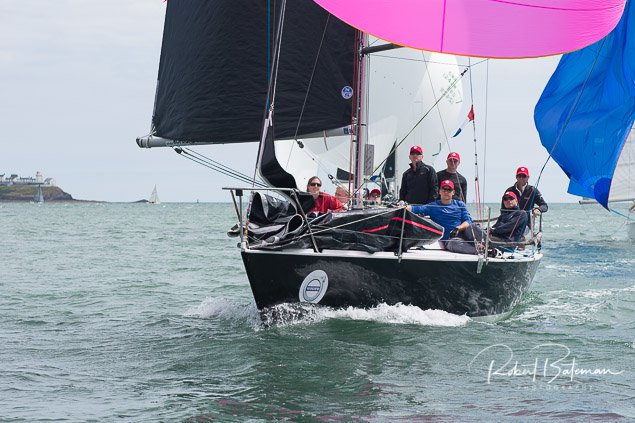 Jonny Swann’s Half Ton Classic Harmony, overall winner of the Harbour Race and second in Class 3
Jonny Swann’s Half Ton Classic Harmony, overall winner of the Harbour Race and second in Class 3
In other words, although Wednesday’s Harbour Race may be considered something of a fun event, those results are very much for real - these are serious contenders. And for Thursday and yesterday’s concluding races, it was back to set courses, Olympic stuff and all that, so how did it all pan out?
Well, for a while it looked as though Harmony would hang onto the overall lead in IRC 3 as well, but Jonny Swan was too eager on Friday morning and got the black flag, and in the afternoon he was fifth. But meanwhile the local Andrieu-designed Half Tonner Miss Whiplash (Ronan & John Downing) was in very smooth form, taking a first and second to move into a two point lead over Harmony in second, while Kieran Collins’ very interesting Olson 30 Coracle IV (a Californian speed design which originated in 1978, believe it or not) was third.
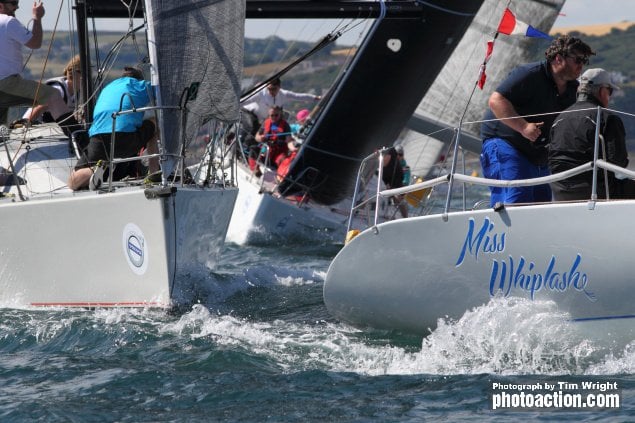 There she is – gone………Ronan & John Downing’s Half Tonner Miss Whiplash snatched the Class 3 lead with great sailing on the final day
There she is – gone………Ronan & John Downing’s Half Tonner Miss Whiplash snatched the Class 3 lead with great sailing on the final day
 One of the most interesting boats in the regatta, Kieran Collins’ 1978-designed Olson 30 Coracle IV was lying second in Class 3 until Miss Whiplash lived up to her name on the final day
One of the most interesting boats in the regatta, Kieran Collins’ 1978-designed Olson 30 Coracle IV was lying second in Class 3 until Miss Whiplash lived up to her name on the final day
So much attention was focused on the many J/109s in the Beaufort Cup series (with which we conclude this report) that it’s easy to overlook the fact that several others sister-ships were racing as standard entrants in Class 2, and this concluded with a battle for the class overall win between two of them, Ronan Harris’s Jigamaree from the Royal Irish YC in Dun Laoghaire, and the 2017 ISORA Champion Mojito (Vicky Cox & Peter Dunlop, Pwllheli SC). In the end, Mojito got it by a whisker, 14 pts to Jigamaree’s 15, which in turn was just one point ahead of sister ship Jelly Baby (Brian & Mary Jones, Royal Cork YC).
Come Thursday, and the One Designs came out to play - the 1720s and International Dragons - modern-looking boats you might well think, of a recent type. But in the case of the Dragon, you’d be much mistaken. Our main page for the night of Thursday July 19th and the morning of Friday July 20th had a sunny photo of the Dragons racing at Cork juxtaposed with the classic gaff ketch Maybird finishing the Round Ireland Race. Modern and ancient, you might well have thought. But the fact is the Dragon design by Johan Anker of Norway first appeared in 1929, while the design of Maybird by Fred Parker first appeared as Aideen in 1934, then was refined to become Maybird in 1937.
 One Design bliss - a pair of 1720s frame the International Dragons
One Design bliss - a pair of 1720s frame the International Dragons
But while Maybird has remained true to her roots, the only thing still original about the Dragon (which was first conceived as a small cruiser-racer) is the hull shape – everything else has been changed, and she still seems as modern as tomorrow. Certainly the class got a tremendous welcome back to Crosshaven, where they used to be very strong in the 1950s and 60s, and by yesterday evening’s conclusion, the overall winner was Daniel Murphy’s Serafina from Kinsale, with Peter Bowring’s Phantom (RIYC) second and Cameron Good’s Little Fella (KYC) third.
As for the 1720s, which originated in Crosshaven in 1994 and take their name from the RCYC’s foundation date as the Water Club of the Harbour of Cork, we mentioned in Tuesday’s Afloat.ie story, in reference to the classic 50ft sloop Northele recently bought by Anthony O’Leary, that for Volvo Cork Week, he’d be racing his 1720 Antix. He has indeed been doing that, and with a real flourish – four firsts and a second to put him out of sight on second-placed Dark Side (Brian Twomey) with the Welsh boat Luvly Jubbly third.
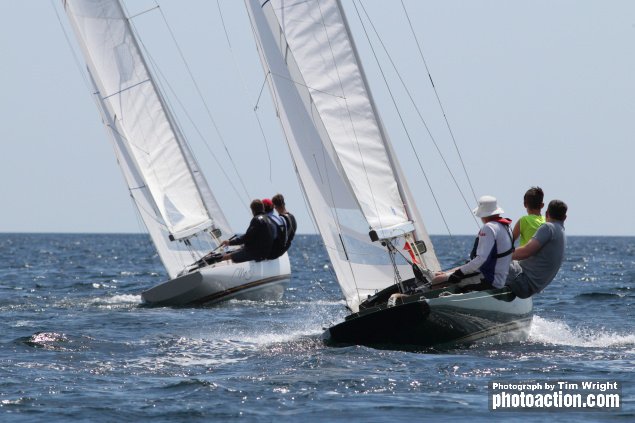 There’s something about the way an International Dragon sails to windward that speaks to all sailors
There’s something about the way an International Dragon sails to windward that speaks to all sailors
At a perhaps slightly more leisurely pace, a select group of ten boats chose to sail the entire regatta on daily coastal courses, though they also did the Harbour Race. Overall, they’d a historic winner – Denis Hewitt & partners of the RIYC on the Mills 36 Raptor, which was originally Aztec, built in 1996 by David Harte and Garrett Connolly for Peter Beamish. With a crew including Fintan Cairns, Nobby Reilly and Barry Rose, we can be quite sure that many issues had been fully discussed by this gathering of the Wise Men by the time Raptor concluded her successful series on a scoreline of 3,1,1,1, & 4.
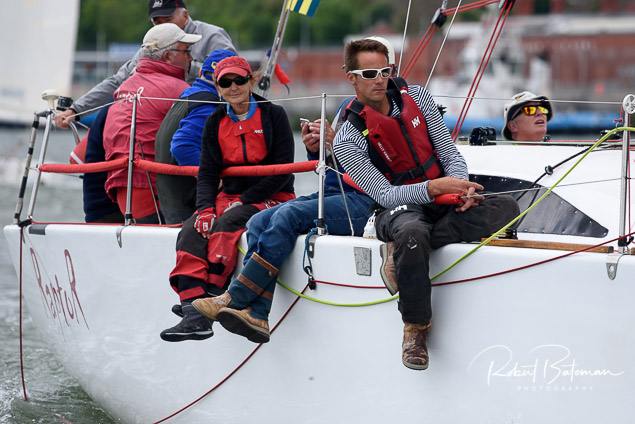 Denis Hewitt & partners of the RIYC on the Mills 36 Raptor
Denis Hewitt & partners of the RIYC on the Mills 36 Raptor
While all the One Design racing was getting into gear in the final two days, the Beaufort Cup was reaching its climax. This inter-services event now outshines everything else in Volvo Cork Week, and it has acquired such momentum it virtually has a life of its own. Although 2016’s inaugural staging was impressive, 2018’s has blown everything else away in its ability to capture popular imagination, and the way that the outcome went contested right to the end.
So what more can we say about Commandant Barry Byrne’s achievement in retaining the trophy? One of my favourite skippers always says that he would rather be lucky than good, and while I never discussed with him whether he meant good by moral or performance standards, every racing sailor knows exactly what he means.
Either way, in the Beaufort Cup, Barry Byrne and his Defence Force’s team sailing John Maybury’s J/109 Joker 2 carried off the Houdini act more than once, starting his campaign by coming from behind to win the Fastnet Race by four minutes and 11 seconds on the water, and then going on through the week to fight off challenges from Youen Jacob with the Baltimore RNLI in Andrew Alegeo’s J/109 Juggerknot, Tanaiste Simon Coveney and his Defence Forces crew on the Irish National Sailing School’s J/109 Jedi, and Dennis & Annamarie Murphy and the Crosshaven RNLI on their Grand Soleil 40 Nieulargo.
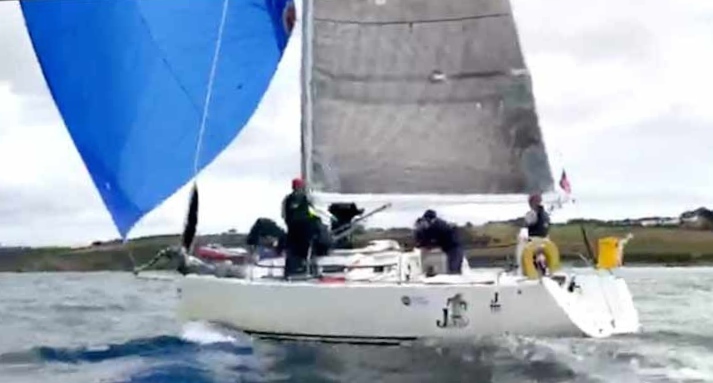 It may be only a blurry screen grab, but this was Joker 2 sweeping into Cork Harbour to win the Fastnet Race by four minutes and 11 seconds on the water, giving a mighty boost to Commandant Barry Byrne and his crew in their quest to retain the Beaufort Cup
It may be only a blurry screen grab, but this was Joker 2 sweeping into Cork Harbour to win the Fastnet Race by four minutes and 11 seconds on the water, giving a mighty boost to Commandant Barry Byrne and his crew in their quest to retain the Beaufort Cup
The pressure was kept up to the very end. With three race sailed yesterday (Friday), Youen Jacob gained a point with a first to Byrne’s second in the first race. But then Barry Byrne got back in the saddle with first in the second race while Jacob was fourth.
While the Byrne crew were ninth in the final race which was won by Tim Goodbody with Simon Coveney second, Youen Jacob was held back to sixth, and Commandant Barry Byrne and his crew had retained the Beaufort Cup only a fortnight after winning the Corinthian Division and taking second overall in the Volvo Round Ireland Race.
So there it goes, Volvo Cork Week 2018. Nail-biting finish to the Beaufort Cup with victory again for Barry Byrne, and a complete tour de force by Rory Fekkes and his little black boat from Carrick. Roll on 2020 and the Tricentenary.
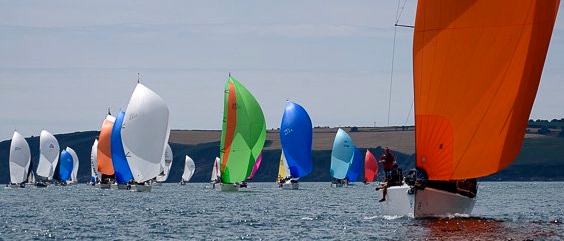 Summertime and sails on Cork Harbour, as it has been for three hundred years and more. Roll on 2020 and the Royal Cork Tricentenary……… Photo Robert Bateman
Summertime and sails on Cork Harbour, as it has been for three hundred years and more. Roll on 2020 and the Royal Cork Tricentenary……… Photo Robert Bateman
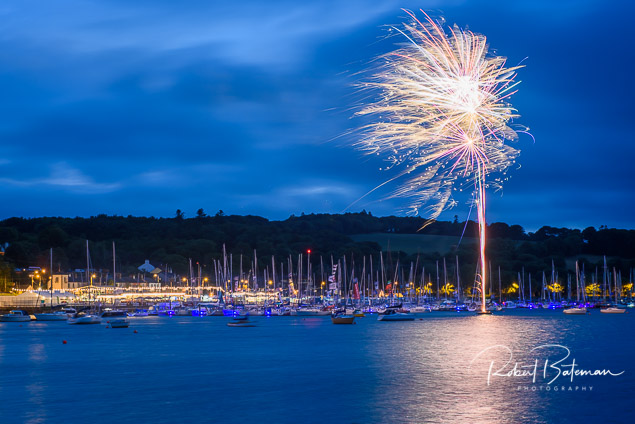 Fireworks mark the conclusion of 2018's Cork Week at Crosshaven Photo: Bob Bateman
Fireworks mark the conclusion of 2018's Cork Week at Crosshaven Photo: Bob Bateman
Click for Afloat.ie's Cork Week 2018 coverage in one handy link
The full fleet of 120 yachts was out for the fourth day of Volvo Cork Week. After a delayed start, a warm sea breeze blew to give over a thousand sailors champagne conditions in outside Cork Harbour. Leaders in all classes are emerging but many of them will be going to the wire.
Dragons were racing at Cork Week for the first time ever and were the second largest fleet (14 entries) after the Beaufort Cup Services fleet.
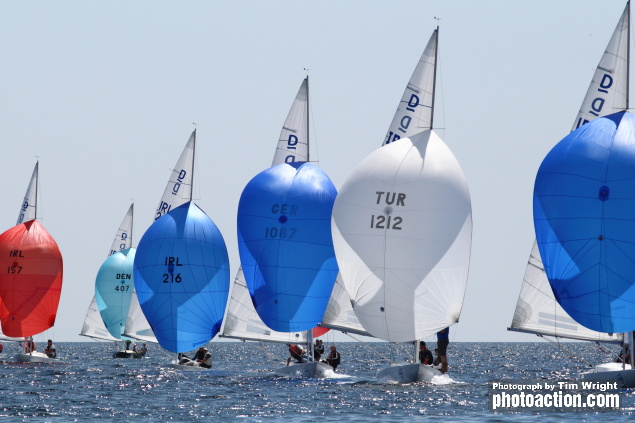
14 Dragons and 11 Cork 1720s started their Southern Championships today, taking part in two races with a building sea breeze off Power Head on a windward-leeward course.
Dragons
The Dragons were flying by the second race, with 15 knots of wind over tide powering the fleet up to full tilt. The racing was exceptional close, and by the end of two contests, three teams were tied at the top. Daniel Murphy's Serafina and Cameron Good's Little Fella, both from Kinsale YC, and Denis Bergin's Sir Ossis of the River (Royal Irish YC).
Daniel Murphy's Serafina and Cameron Good's Little Fella were having a pint at the Royal Cork Yacht Club after racing, and both agreed: “In recent years, the Irish Dragons have organised their own events but we decided that we wanted to have a bit of a change from that and take part in bigger regattas. Volvo Cork Week has a much bigger social scene, and we know many of the sailors taking part in the other classes, which makes for great socialising after racing. The Royal Cork has made us feel very welcome, mooring us all together, and the race management and courses today were excellent.”
1720s

For the first day of the 1720 Southern Championship, Anthony O'Leary's Antix (Royal Cork YC) won both races. A late crew replacement for Tommy Murphy due to illness, led to 11 year-old Harry Moynan from Templebreedy National School Crosshaven, stepping on board Antix for his first taste of Volvo Cork Week. “It was great racing with my dad and such great sailors, I race in the Opi class at the Royal Cork, but I have never raced like that before. I was pumping the main downwind in the first race, and helped get the main in at the bottom mark.” commented Harry Moynan.
"Dragons have not been racing here for some time, and they have received a warm welcome"
“It is great to see the 1720s and Dragons out for Volvo Cork Week.” commented Anthony O'Leary. “The 1720s are naturally part of this event but the Dragons have not been racing here for some time, and they have received a warm welcome by the Royal Cork. The race committee put on a very good course for us today. We were a little under crew weight, which helped in the first race as the wind was light, but for the second race, we paid the price when the wind got up. David Love (Mini-Apple) was pushing us very hard.”
Beaufort Cup
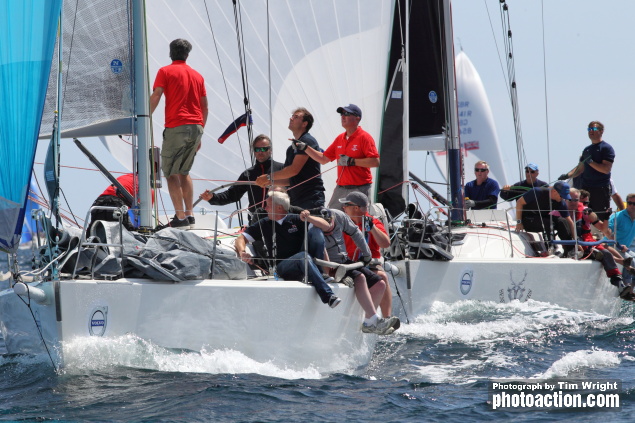
For the Beaufort Cup, Barry Byrne's Irish Defence Forces team, racing J/109 Joker 2, still lead the series but their lead has been cut down to just three points after two races today. Youen Jacob's Baltimore RNLI team, racing J/109 Juggerknot, moved up to second place, and could have gone into the lead, but for a headsail problem in the first race. Denis & Annamarie Murphy's Crosshaven RNLI team, racing Grand Soleil 40 Nieulargo, won both of today's races to move up to third for the series.
“We sat down as a team at last night's Gala Dinner, and talked long and hard about giving it our all for the rest of the regatta, and everything went very well today,” commented Dennis Murphy. “ Nieulargo is heavier than the J/109s so we love a bit of breeze, and we hope that will continue tomorrow.”
IRC One
 Frank Whelan's Grand Soleil 44 Eleuthera (Greystones SC) was in top form on today's Olympic Course, winning both races to move up to third. Photo: Tim Wright
Frank Whelan's Grand Soleil 44 Eleuthera (Greystones SC) was in top form on today's Olympic Course, winning both races to move up to third. Photo: Tim Wright
Frank Whelan's Grand Soleil 44 Eleuthera (Greystones SC) revelled on today's Olympic Course, winning both races to move up to third. After five races sailed, Jay Colville's First 40 Forty Licks (East Down YC) leads the class by five points from Jonathan Anderson's J/122 El Gran Senor (Clyde Cruising Club).
IRC Two

Ronan Harris' J/109 Jigamaree (Royal Irish YC) was in sparkling form, winning both of today's races to go top of the class after five races. Brian & Mary Jones J/109 Jelly Baby (Royal Cork YC) scored two podium results, but dropped to second, just two points off the lead. Dunlop & Cox's J/109 Mojito (Pwllheli SC) and Jean Francois Nouel's Sunfast 3200 Hakuna Matata (CN Pornic) are tied on points for third.
IRC Three
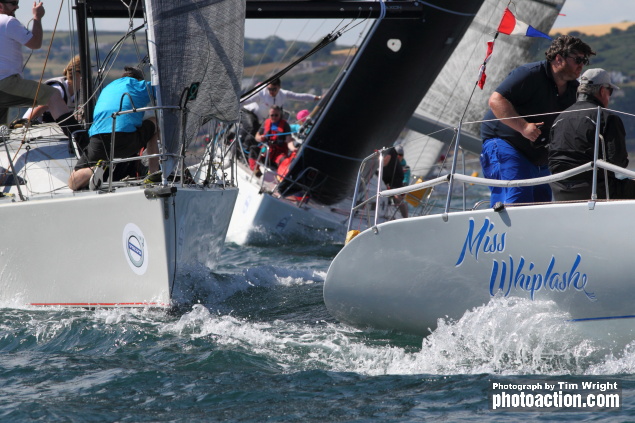 Ronan & John Downing's Half Tonner Miss Whiplash Photo: Tim Wright
Ronan & John Downing's Half Tonner Miss Whiplash Photo: Tim Wright
After six races sailed the discard rule has come into force for the class. John Swan's Half Tonner Harmony (Howth YC) has maintained their lead, but only by a single point from Kieran Collins Olson 30 Coracle IV (Royal Cork). Both teams scored race wins today. Ronan & John Downing's Half Tonner Miss Whiplash (Royal Cork YC) won the last race of the day, staying in touch, just two points off the lead.
IRC Four
 Rory Fekkes's Quarter Tonner Fn'Gr8 (Carrickfergus SC) Photo: Tim Wright
Rory Fekkes's Quarter Tonner Fn'Gr8 (Carrickfergus SC) Photo: Tim Wright
Rory Fekkes's Quarter Tonner Fn'Gr8 (Carrickfergus SC) was in fine form on today's windward leeward course, smashing out two bullets to take a stranglehold on the series. Denis Byrne's Trapper 25 Cracker (Royal Cork YC) is in second place, but only on countback from Paddy Kyne's X-302 Maximus, which won the first race of the day.
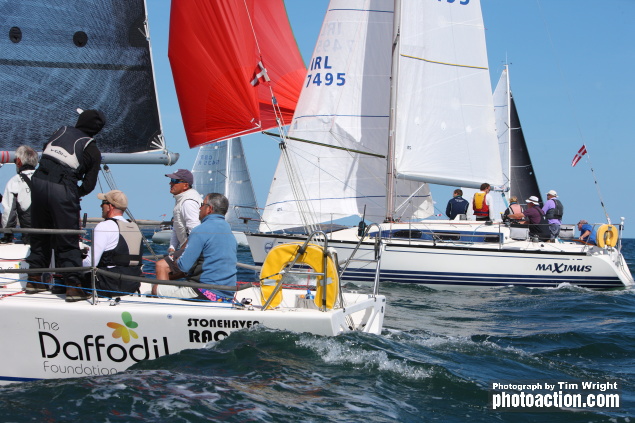 Paddy Kyne's X-302 Maximus, won the first race of the day in IRC Four. Photo: Tim Wright
Paddy Kyne's X-302 Maximus, won the first race of the day in IRC Four. Photo: Tim Wright
Coastal Class
Denis Hewitt's Mills 37 Raptor (Royal Irish YC) looks unstoppable in the Coastal IRC Class, scoring their third win of the series Raptor has ten point lead over Patrick Burke's First 35 Prima Luce (Royal Irish YC). Henry Hogg's Lisador (Garrykennedy Sailing Club) is just a point behind Prima Luce in third.
Non-Spinnaker
In IRC 1 Non-Spinnaker, a two-horse race has developed between the leading yachts. Broadhead, Collins & Stuart's Sigma 38 Persistence (Royal Irish YC), and Aidan Heffernan's Dehler 36 Indulgence (Schull Harbour SC), are locked in a battle royale. The two teams have won every race in the class so far, but Persistence has held onto the lead, after scoring two bullets today. Clodagh O'Donovan's Roaring Forties (Royal Cork YC) is third.
In IRC 2 Non-Spinnaker, the O'Mahony's Hanse 31 Loch Greine (Royal Cork YC) still leads the class, but two other Royal Cork YC teams are applying the pressure. Tom McCarthy's Impala 28 Whistlin' Dixie is just a point off the lead, after winning two of today's races. Pat Vaughan's Sigma 33 Aramis is third.
 Tom McCarthy's Impala 28 Whistlin' Dixie Photo: Tim Wright
Tom McCarthy's Impala 28 Whistlin' Dixie Photo: Tim Wright
Racing for the IRC Classes at Volvo Cork Week will conclude tomorrow, Friday 20th July, The 1720 and International Dragon Southern Championships will race through until Saturday 21st July.
Thursday Photo Gallery below by Tim Wright
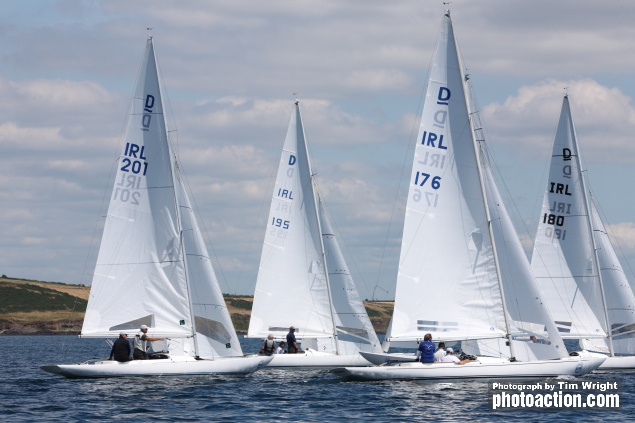
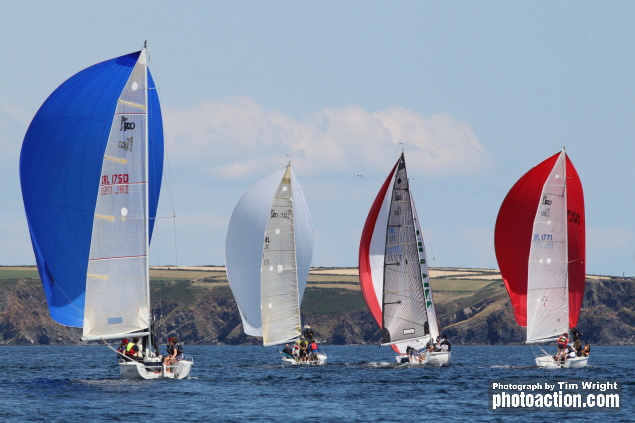
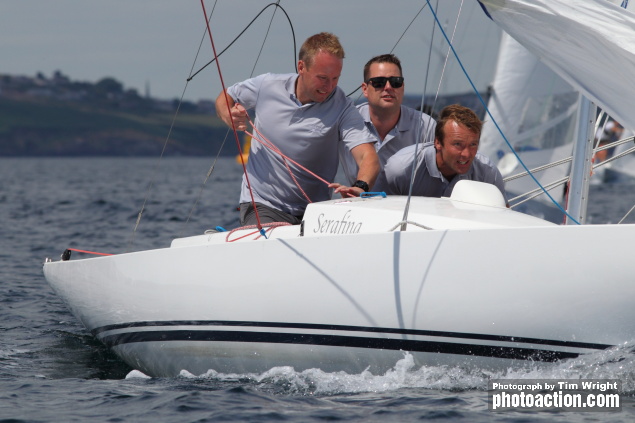

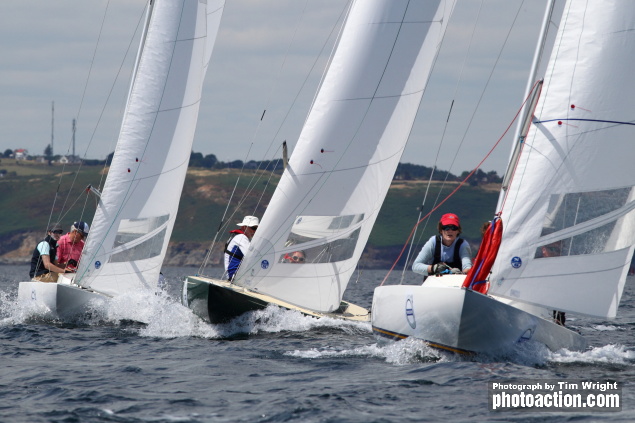

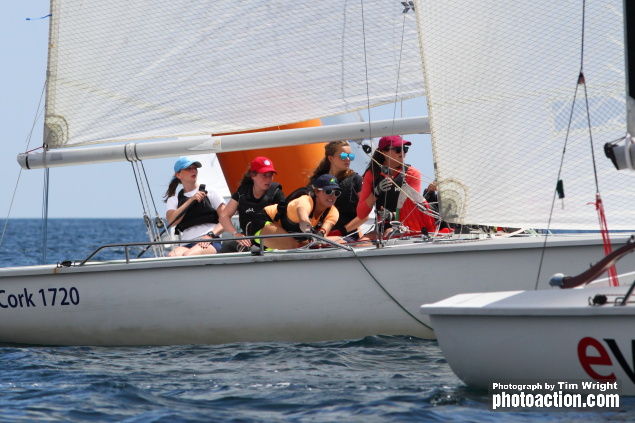
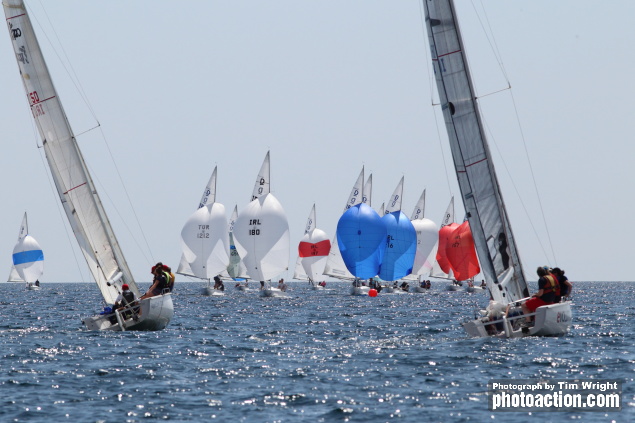
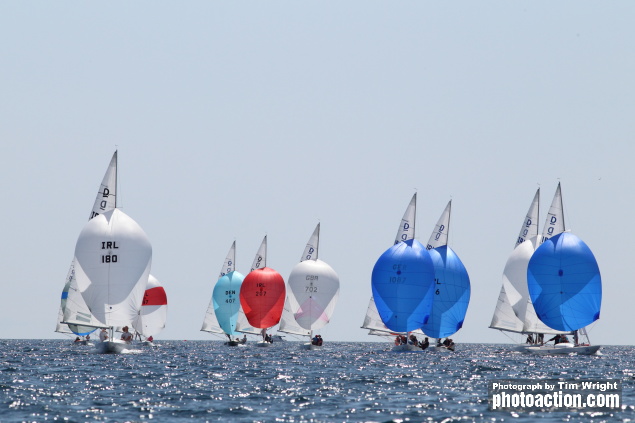
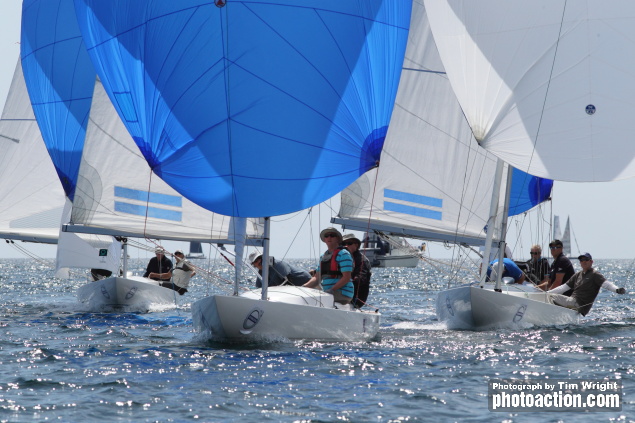
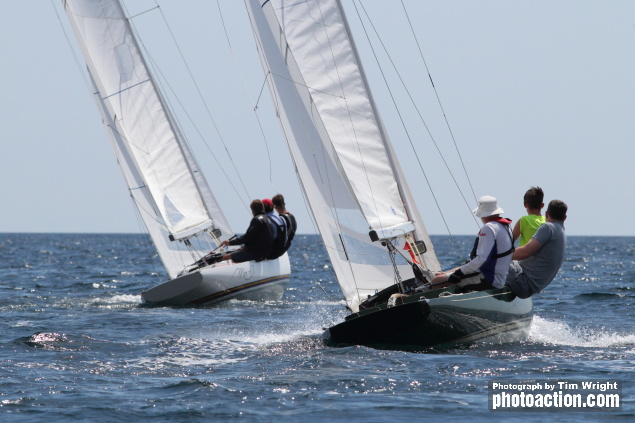
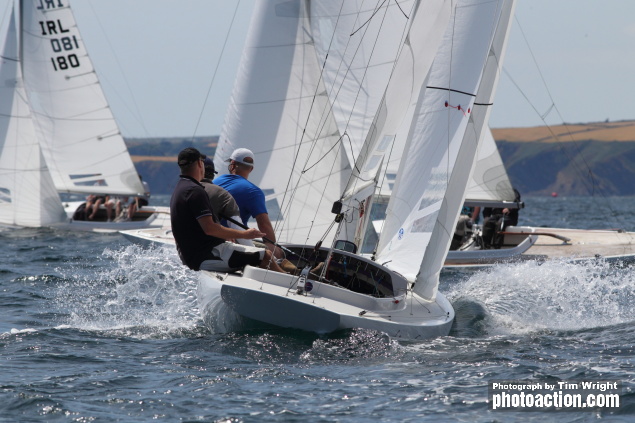
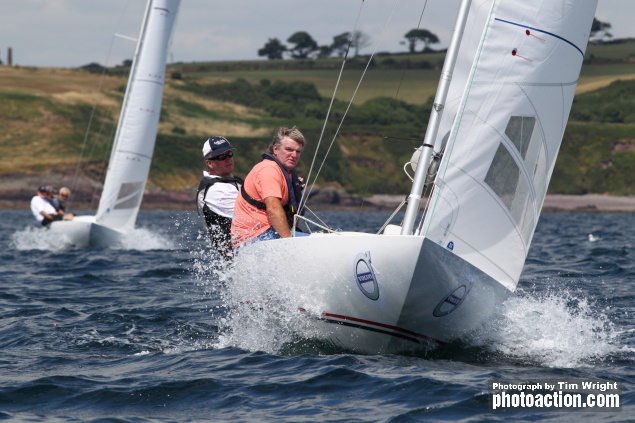
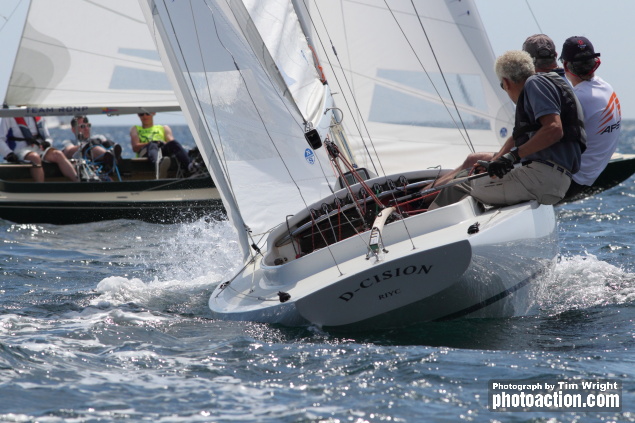


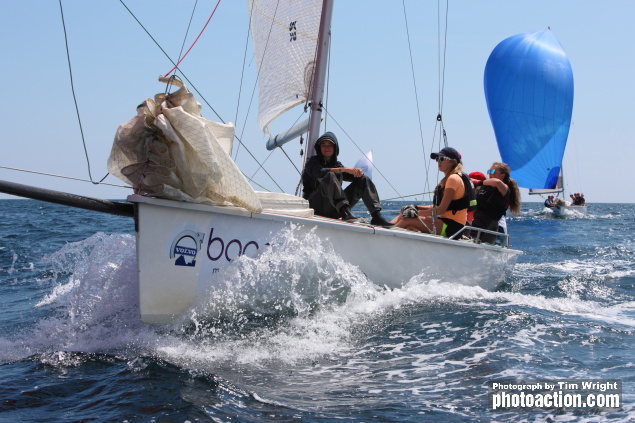
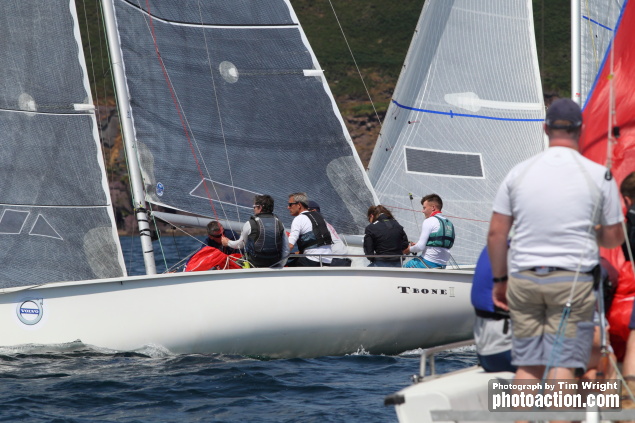
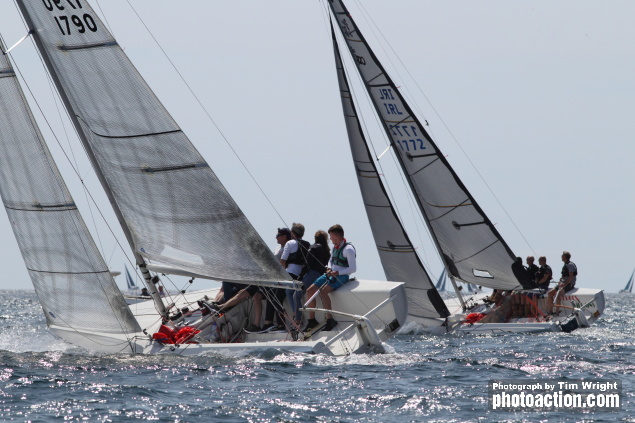
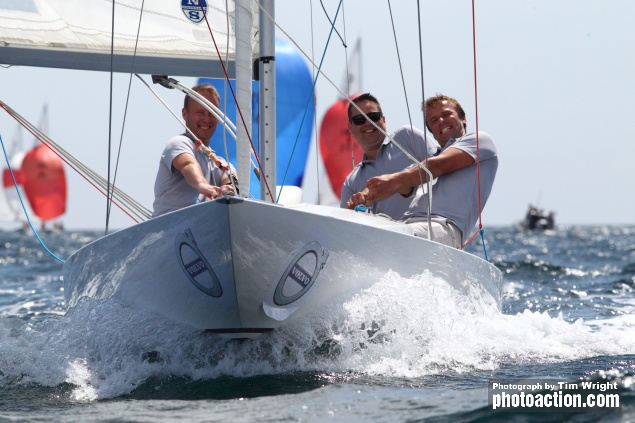
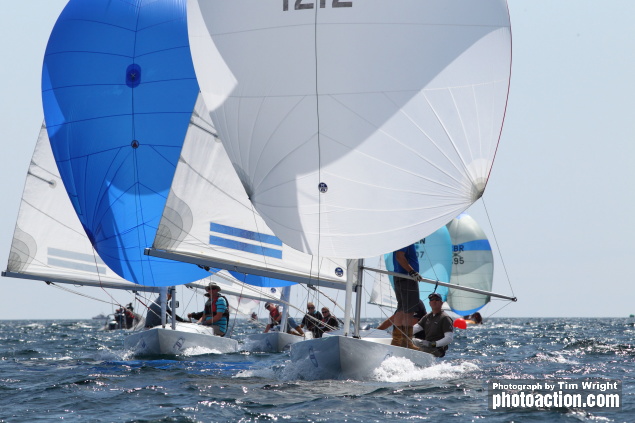
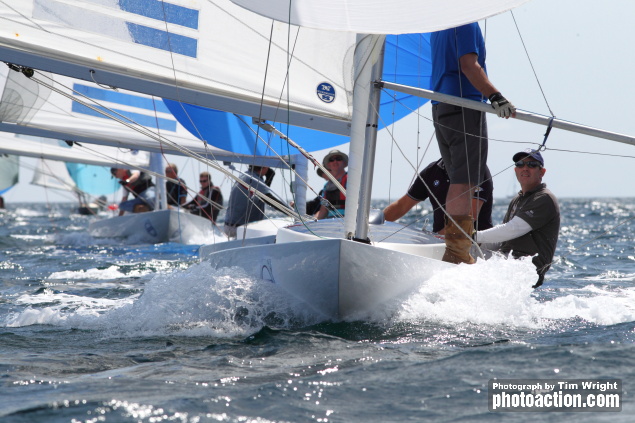
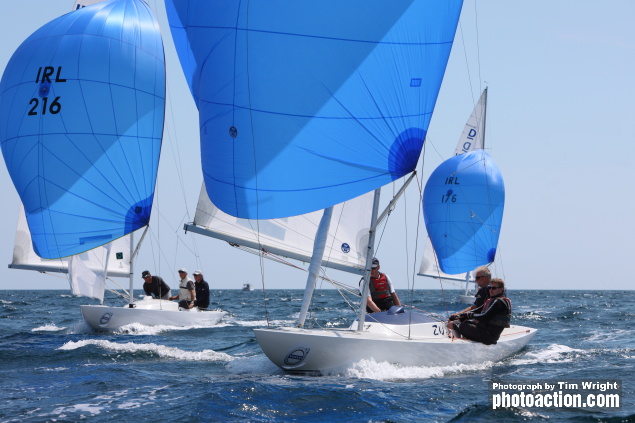

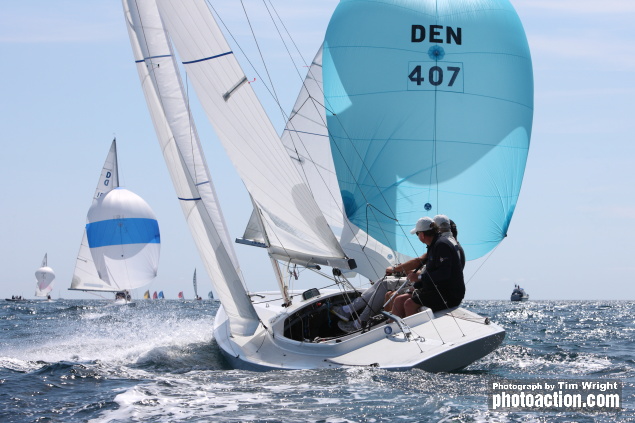
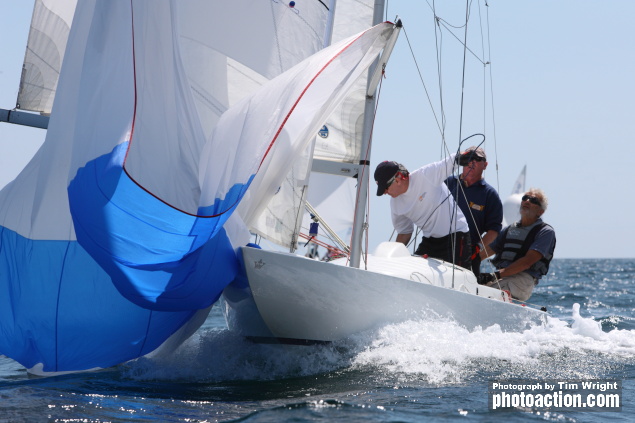
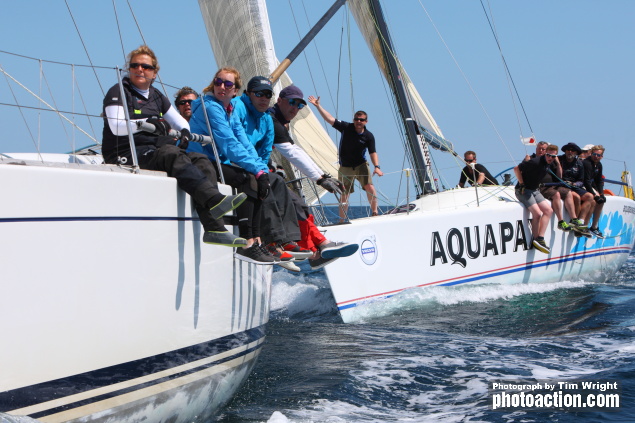
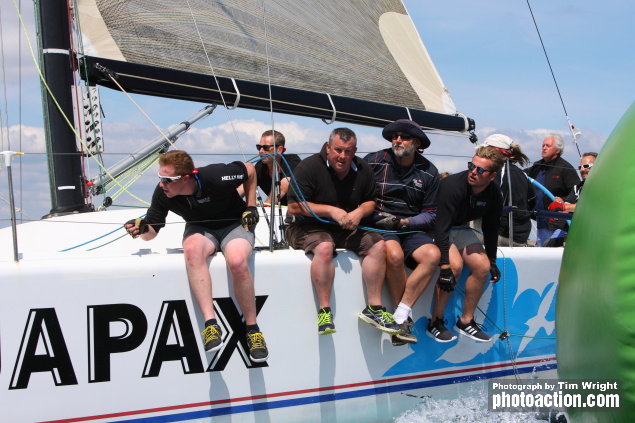
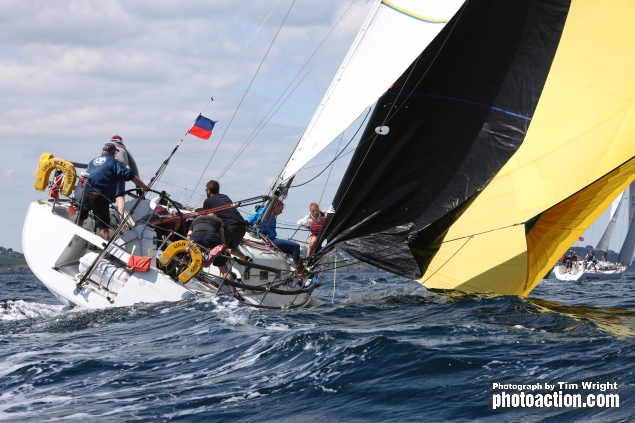


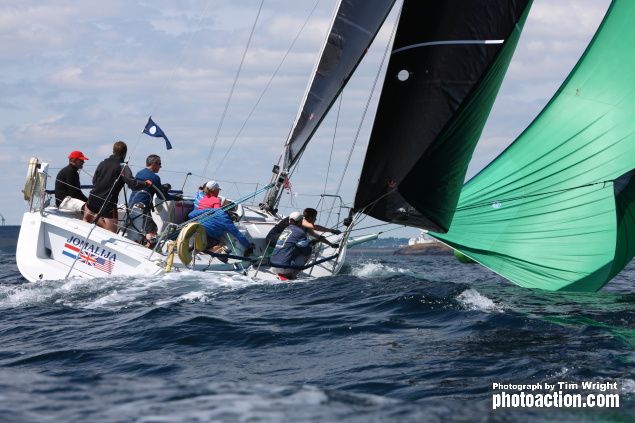
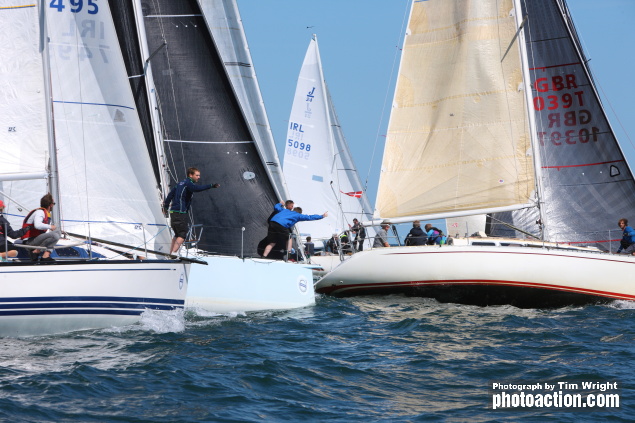
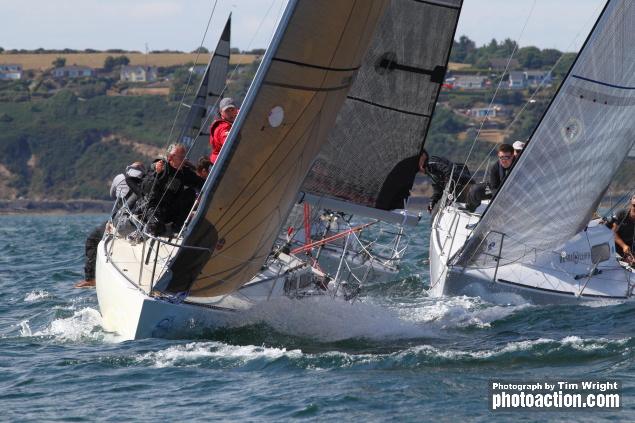
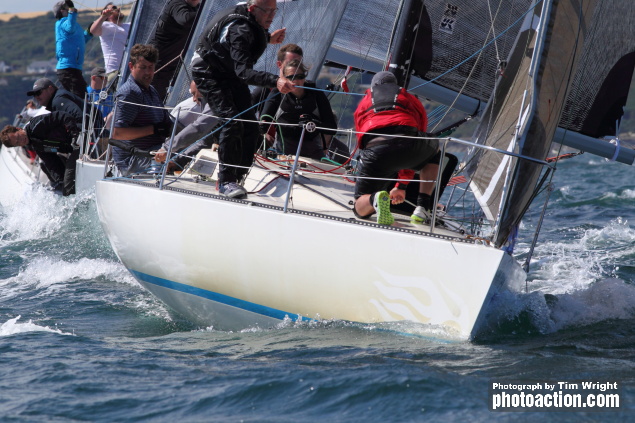
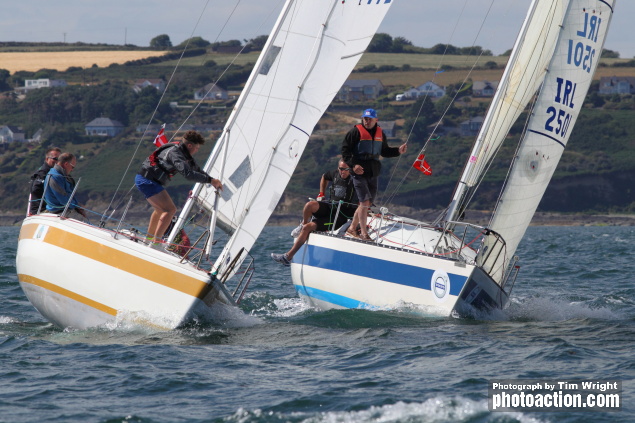

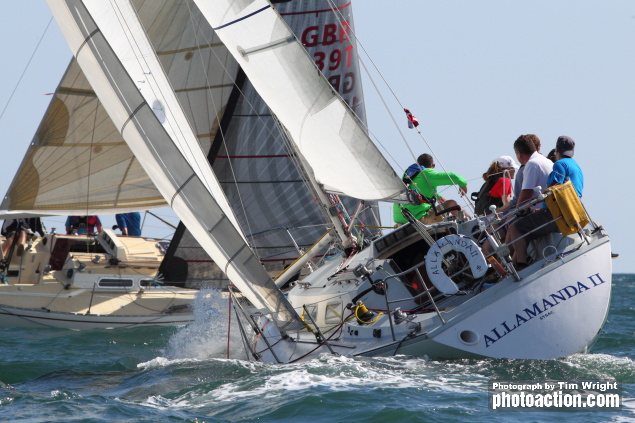

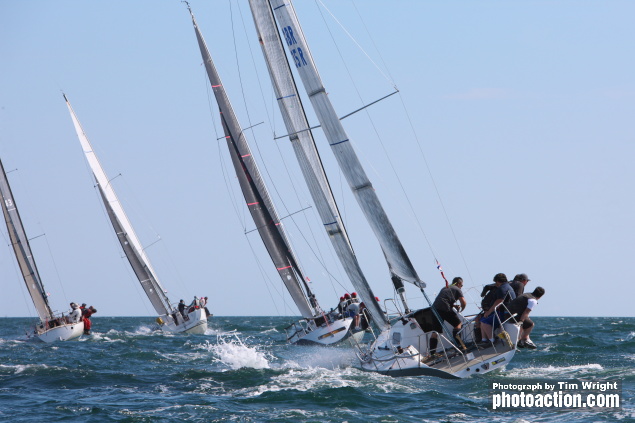
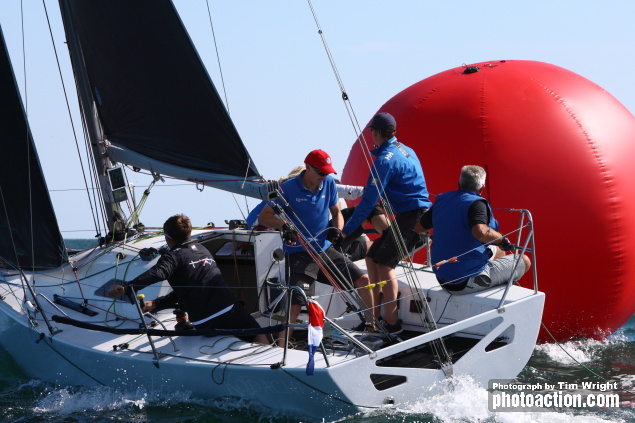
Full results here
Cork Week In–Harbour Race Photo Gallery
Still with two days of racing to go, Volvo Cork Week staged a spectacular gathering of all the racing yachts today for the iconic Harbour Race that included a massed start and sail past the historic town of Cobh.
Photographer Tim Wright captured the action below.




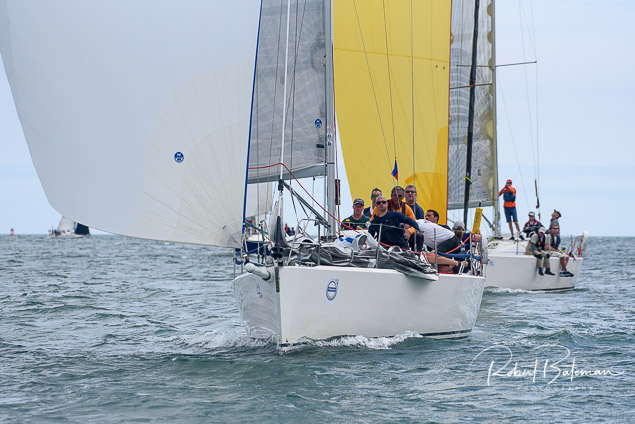
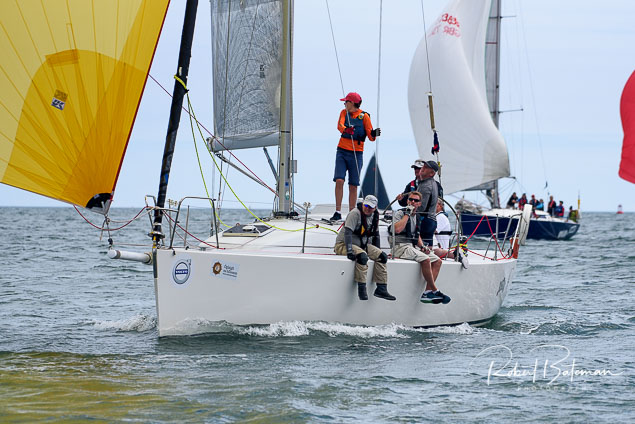

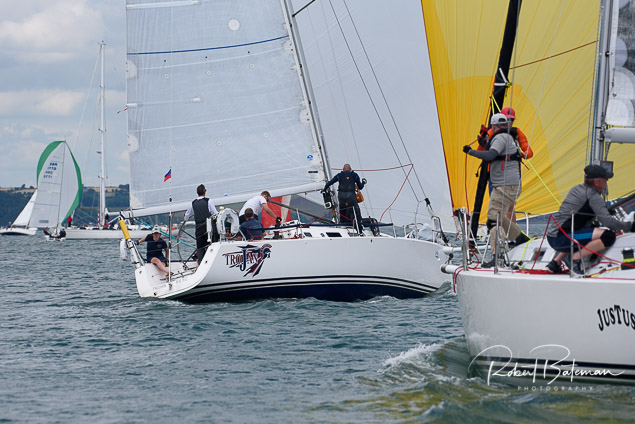
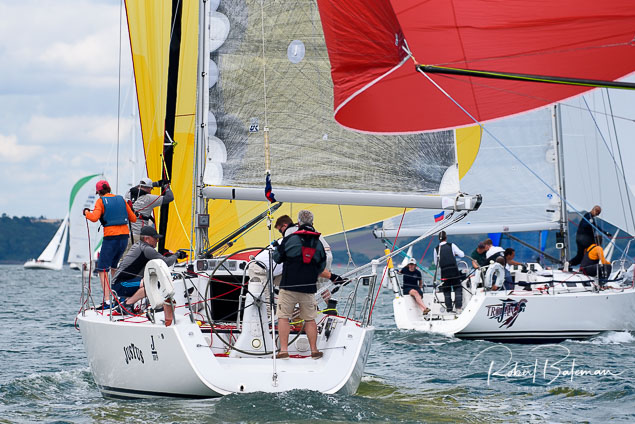
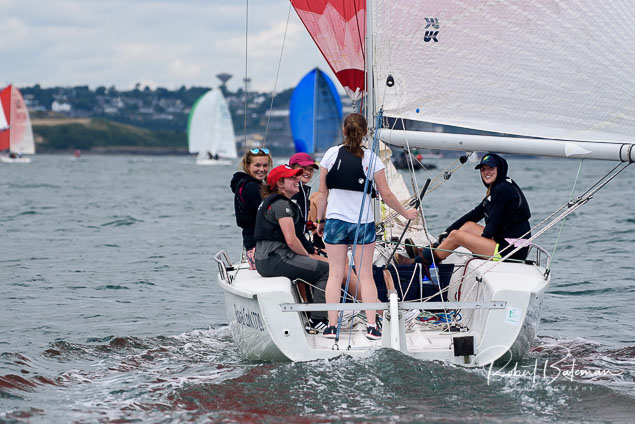

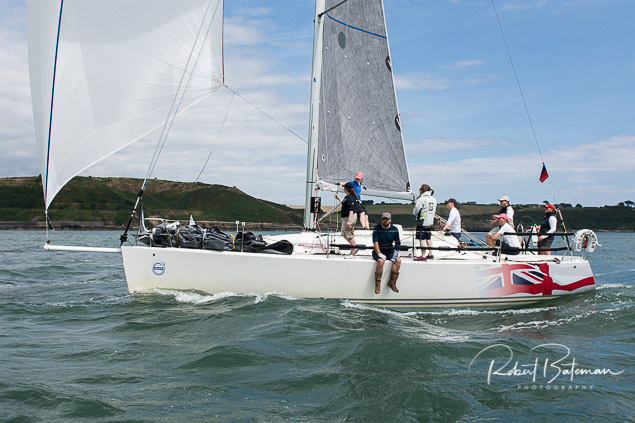

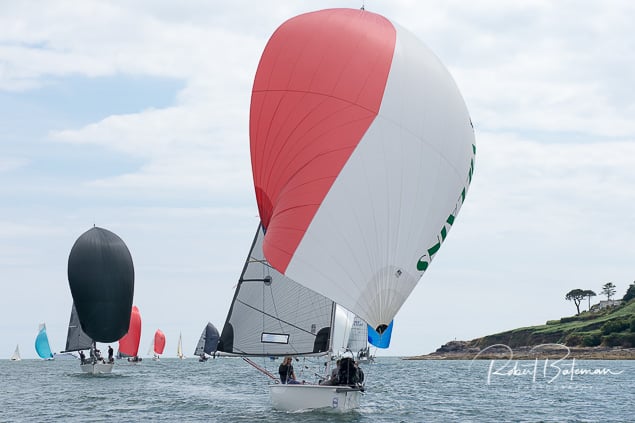



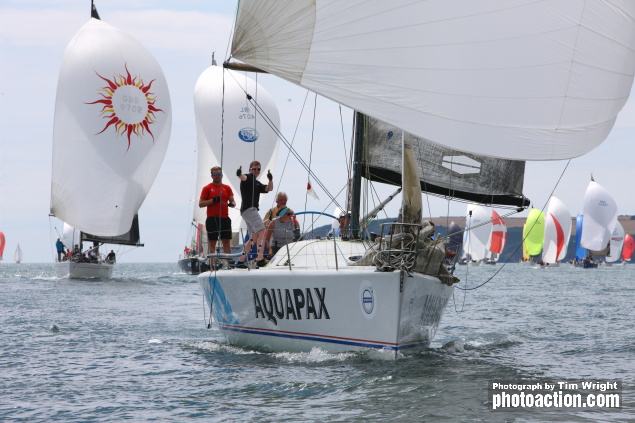
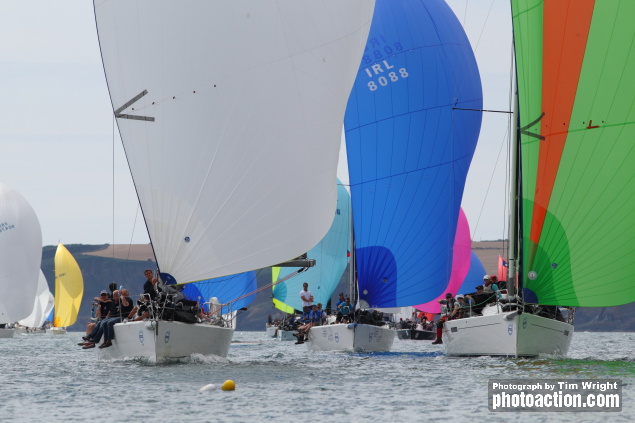

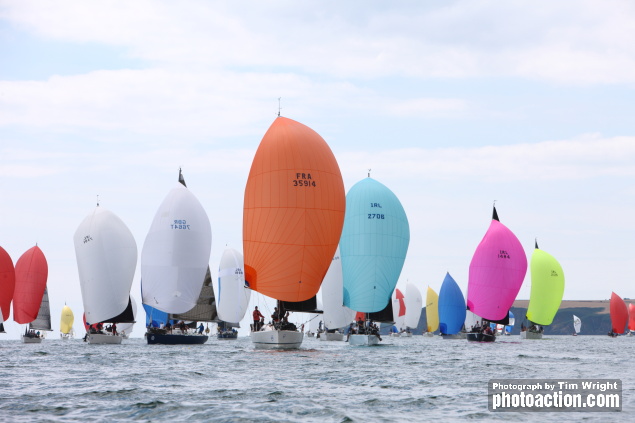
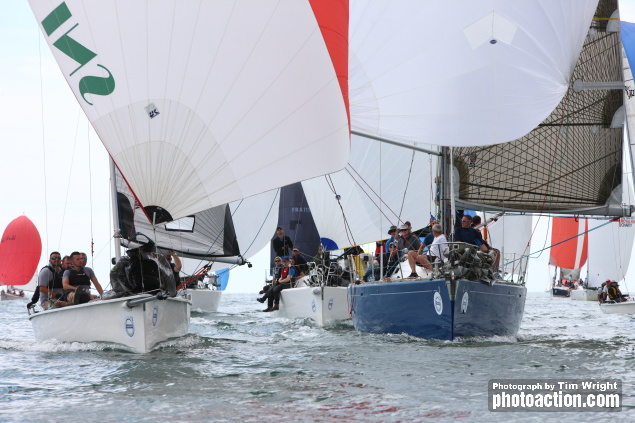
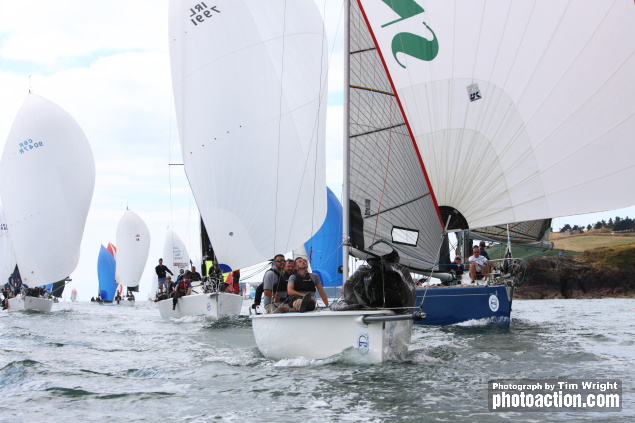
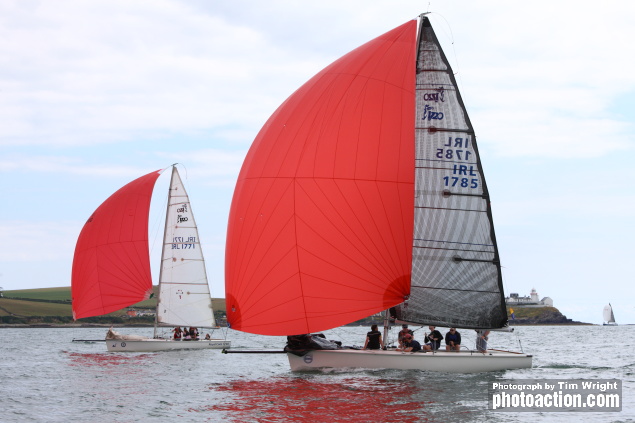

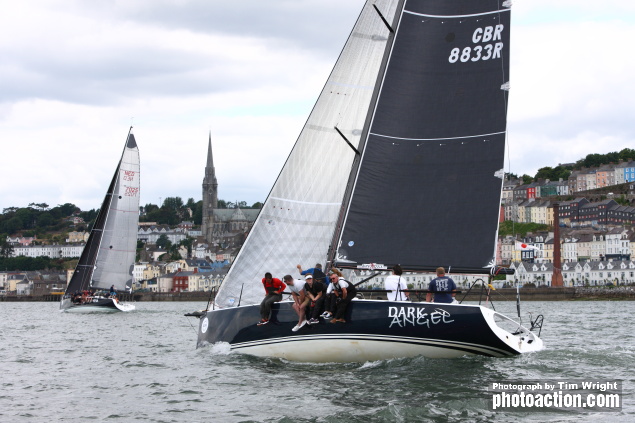



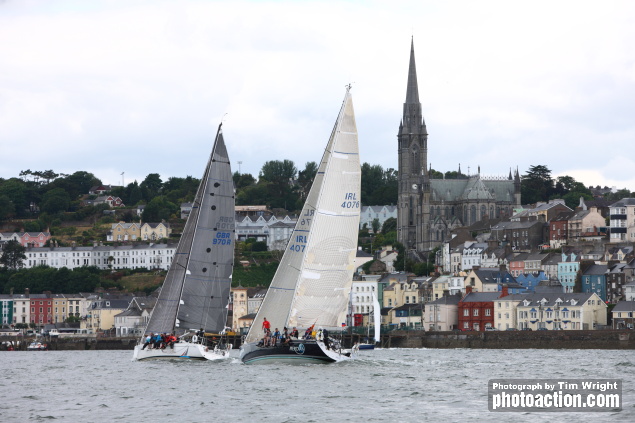

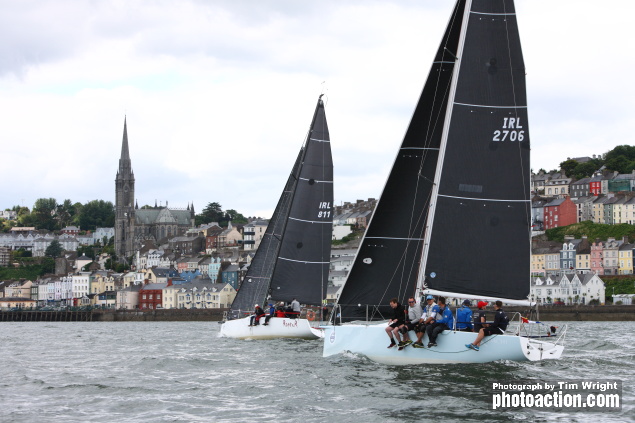
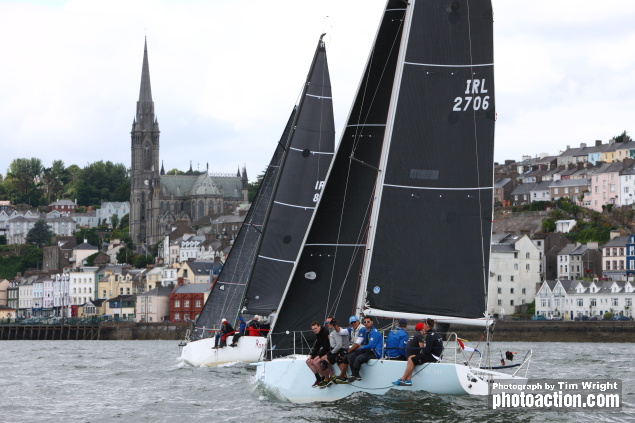

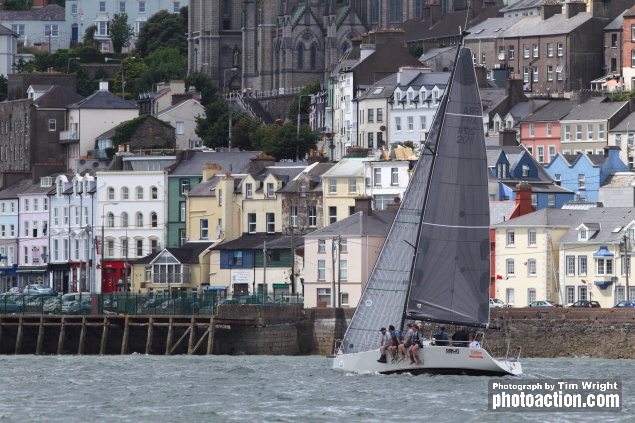
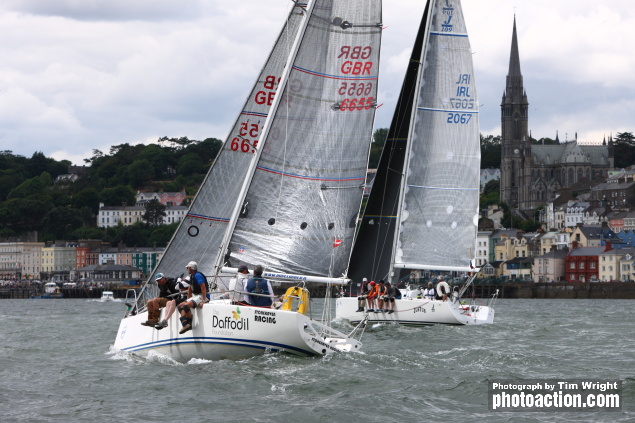
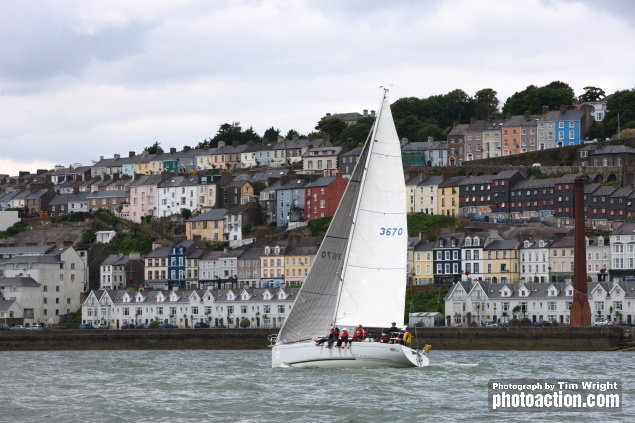


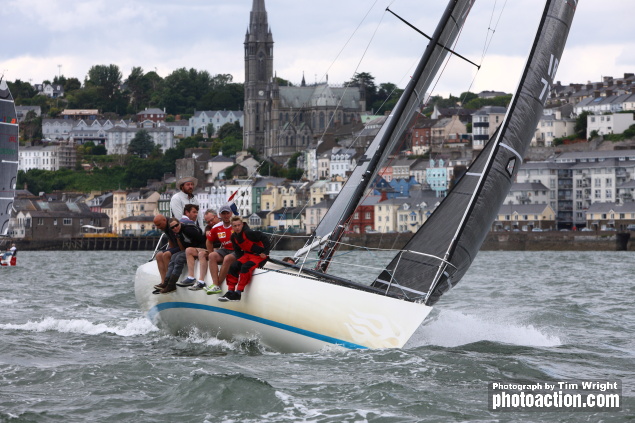

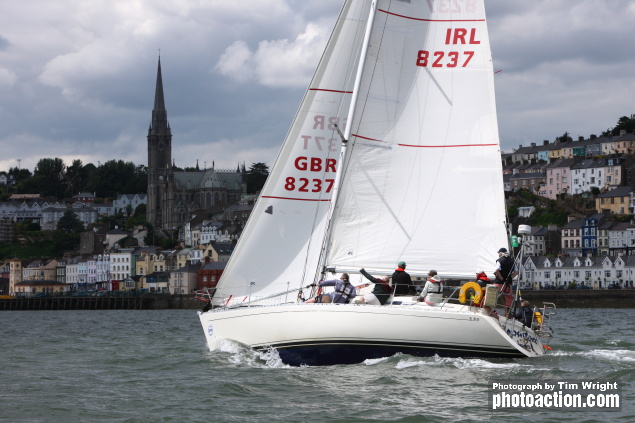
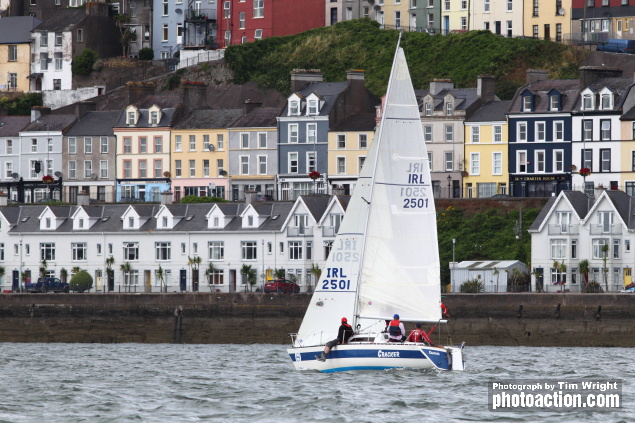
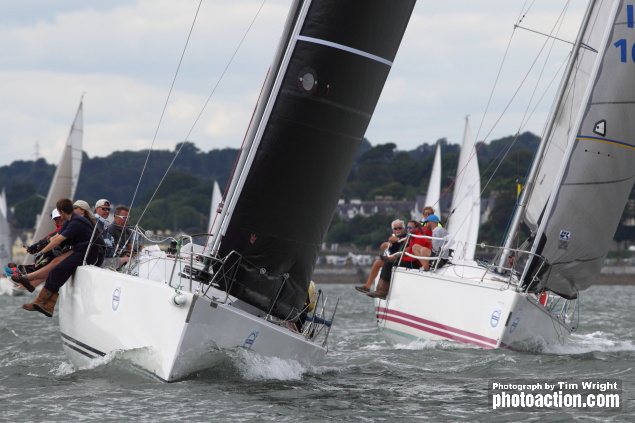

Overall leaders have emerged in all classes at Volvo Cork Week today after 85 yachts formed an impressive single starting line for the regatta's signature race in the beautiful surroundings of Cork Harbour for day three of the week long event.
The race is on across all 17–classes to establish overall leads going into the final two days that will feature three intense races per day.
After a General Recall the fleet readied themselves for a Black Flag restart today, which was far from conservative, many of the massive starting line up hitting the line on the 'B' of the Bang!
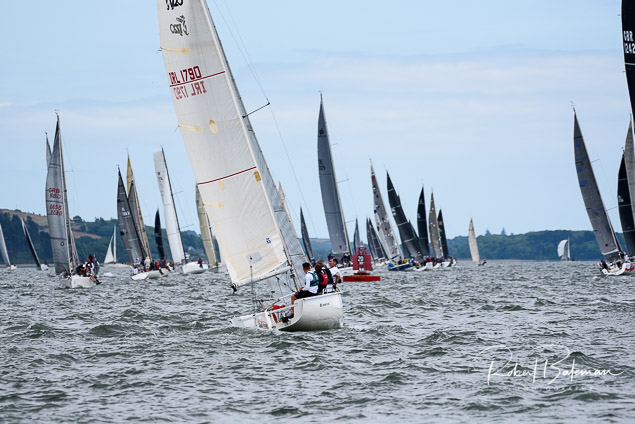 (Above and below) Getting set for the all–in start, Cork Week's 'signature' race Photo: Bob Bateman
(Above and below) Getting set for the all–in start, Cork Week's 'signature' race Photo: Bob Bateman
 A huge starting-line of a kilometre in length was needed to accommodate the 85 boats and stretched across the mouth of Cork Harbour outside Roche's point. Photo: Bob Bateman
A huge starting-line of a kilometre in length was needed to accommodate the 85 boats and stretched across the mouth of Cork Harbour outside Roche's point. Photo: Bob Bateman
 Irish Sailing President Jack Roy Cork Week's Principal Race Officer Photo: Bob Bateman
Irish Sailing President Jack Roy Cork Week's Principal Race Officer Photo: Bob Bateman
A kaleidoscope of spinnakers made for an amazing sight as the fleet entered Cork Harbour for close quarters racing past Spike Island and Cobh. Race Officers Jack Roy and Rob Lamb were roundly applauded at the daily prize giving for their teams' efforts in producing a great day of racing.
 (Above and below) The spinnaker parade of sail downwind was a great sight ashore Photo: Bob Bateman
(Above and below) The spinnaker parade of sail downwind was a great sight ashore Photo: Bob Bateman
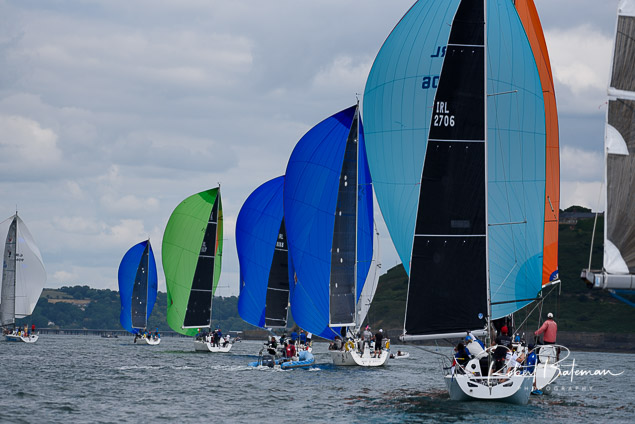 The sun split through the broken clouds as a long stream of spinnaker sails snaked from Church Bay northwards towards Cobh as the procession of boats raced past the rising slopes of the famous maritime town Photo: Bob Bateman
The sun split through the broken clouds as a long stream of spinnaker sails snaked from Church Bay northwards towards Cobh as the procession of boats raced past the rising slopes of the famous maritime town Photo: Bob Bateman
The Beaufort Cup switched to inshore mode for the Harbour Race. Barry Byrne's Irish Defence Force team, racing Joker 2, pulled off a Harry Houdini Act to win the race by just seven seconds from Simon Coveney's Irish Defence Forces Team, racing Jedi. Joker 2 was deep down in the class rounding in front of Cobh but came back with some tenacity. The two J/109s were overlapped going through the finish line, Jedi took the gun by one second but Joker 2 was the victor after time correction. Youen Jacob's Baltimore RNLI team, racing J/109 Juggerknot was third. Joker 2 now has a three-point lead in their defence of the Beaufort Cup. Jedi and Juggerknot are tied for second place.
 Simon Coveney's Beaufort Cup entry Jedi, with INSS's Kenny Rumball of Dun Laoghaire trimming the kite Photo: Bob Bateman
Simon Coveney's Beaufort Cup entry Jedi, with INSS's Kenny Rumball of Dun Laoghaire trimming the kite Photo: Bob Bateman
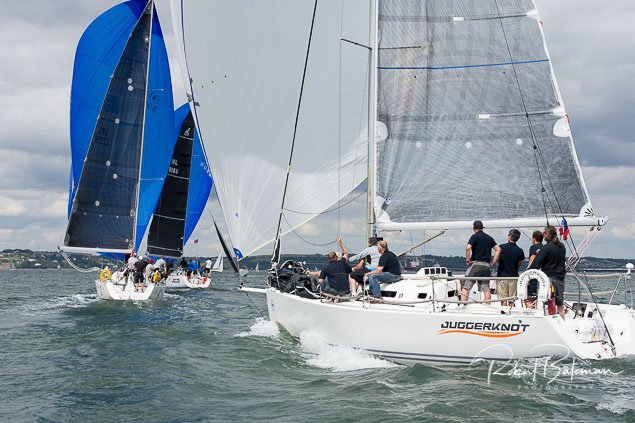 Close racing for the Beaufort Cup fleet with Baltimore RNLI ( the J109 Juggerknot) closest to camera Photo: Bob Bateman
Close racing for the Beaufort Cup fleet with Baltimore RNLI ( the J109 Juggerknot) closest to camera Photo: Bob Bateman
 Thomas Roche's Salona Meredian from Kinsale representing the Irish Naval Services and the Simon Community Photo: Bob Bateman
Thomas Roche's Salona Meredian from Kinsale representing the Irish Naval Services and the Simon Community Photo: Bob Bateman
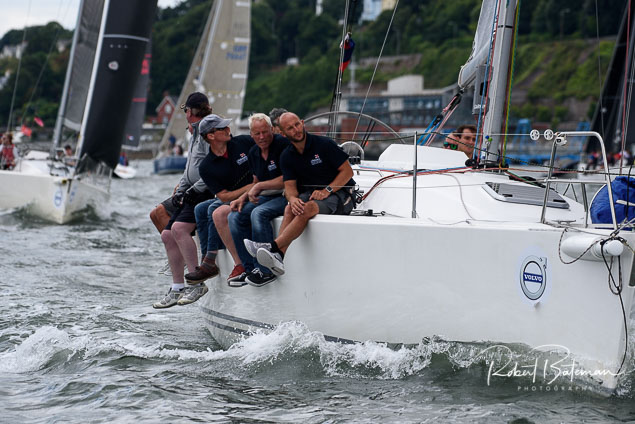 Mike Shrives' Jolly Jack Tar from the Royal Navy Sailing Association Photo: Bob Bateman
Mike Shrives' Jolly Jack Tar from the Royal Navy Sailing Association Photo: Bob Bateman
In IRC One, day one leader Jay Colville's Forty Licks with Russell McGovern among the crew from East Down Yacht Club was the winner of the Harbour Race to go back on top overall of the nine boat fleet. Jonathan Anderson's El Gran Senor, a J122E, was third to give the Clyde entry second overall. Swansea's Dark Angel, with Robert O'Leary helming, is now third overall after a second in today's harbour race.
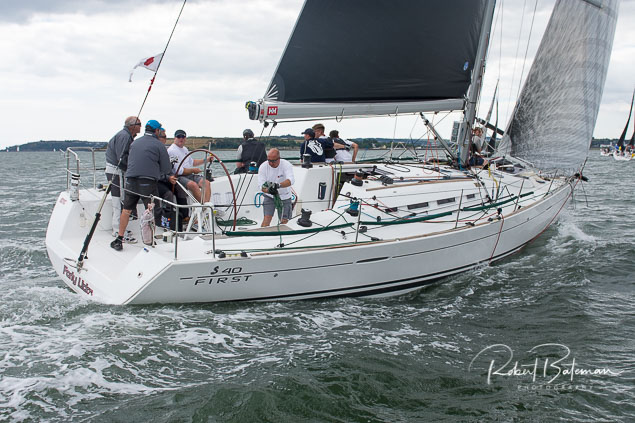 IRC One Leader Jay Colville's Forty Licks from East Down Photo: Bob Bateman
IRC One Leader Jay Colville's Forty Licks from East Down Photo: Bob Bateman
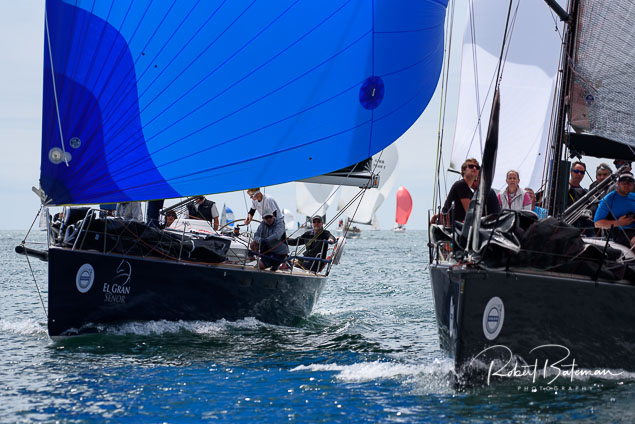 (Above and below) Jonathan Anderson's El Gran Senor, a J122E to weather with Conor Phelan's Jump Ker 37 below Photo: Bob Bateman
(Above and below) Jonathan Anderson's El Gran Senor, a J122E to weather with Conor Phelan's Jump Ker 37 below Photo: Bob Bateman
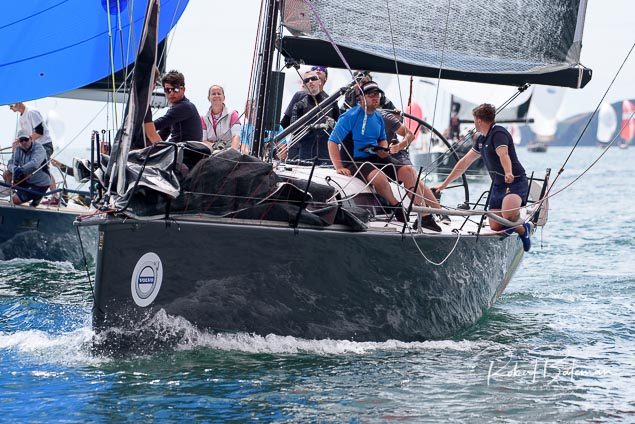
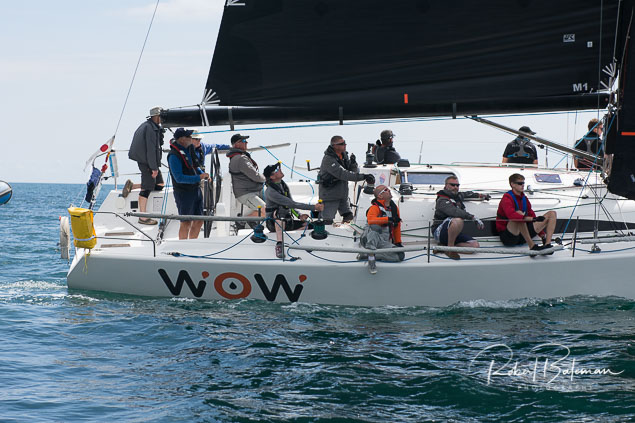 Mark Mansfield on the helm of the Farr 42 Wow Photo: Bob Bateman
Mark Mansfield on the helm of the Farr 42 Wow Photo: Bob Bateman
In IRC Two, Brian & Mary Jones' J/109 Jelly Baby (Royal Cork YC) put in a strong performance to win the Harbour Race and in doing so lead the class for the series after three races but only on countback from Dunlop & Cox's J/109 Mojito (Pwllheli SC).
 Jelly Baby (Brian & Mary Jones) and Hakuna Matata (Jean Francois Nouel) on port tack in close to Cobh Photo: Bob Bateman
Jelly Baby (Brian & Mary Jones) and Hakuna Matata (Jean Francois Nouel) on port tack in close to Cobh Photo: Bob Bateman
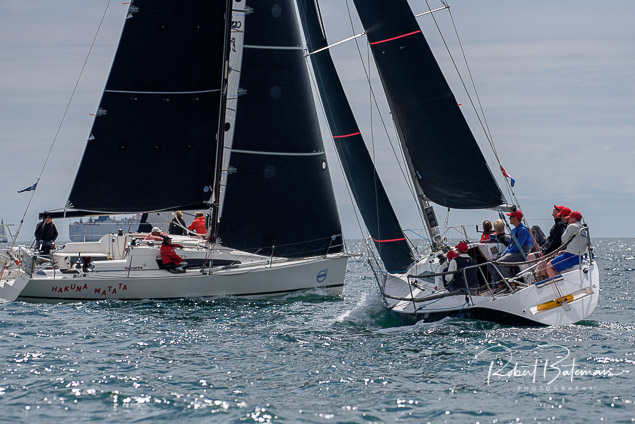 IRC 3 leader Jonny Swan's Half Tonner Harmony (Howth YC) on starboard tack with IRC 2 entry Hakuna Matata (Jean Francois Nouel) Photo: Bob Bateman
IRC 3 leader Jonny Swan's Half Tonner Harmony (Howth YC) on starboard tack with IRC 2 entry Hakuna Matata (Jean Francois Nouel) Photo: Bob Bateman
In IRC Three, Jonny Swan's Half Tonner Harmony (Howth YC) took a game-changing win to go top of the class, scoring the fastest corrected time under IRC from all of the 85 starters.
 (above and three photos below) An overall winner of the Harbour Race was declared across all classes that saw Jonny Swan on Harmony from Howth Yacht Club emerge top boat overall, defeating even the larger and newer boats of Class One thanks to a very fast time around the 16.5 nautical-mile course Photo: Bob Bateman
(above and three photos below) An overall winner of the Harbour Race was declared across all classes that saw Jonny Swan on Harmony from Howth Yacht Club emerge top boat overall, defeating even the larger and newer boats of Class One thanks to a very fast time around the 16.5 nautical-mile course Photo: Bob Bateman


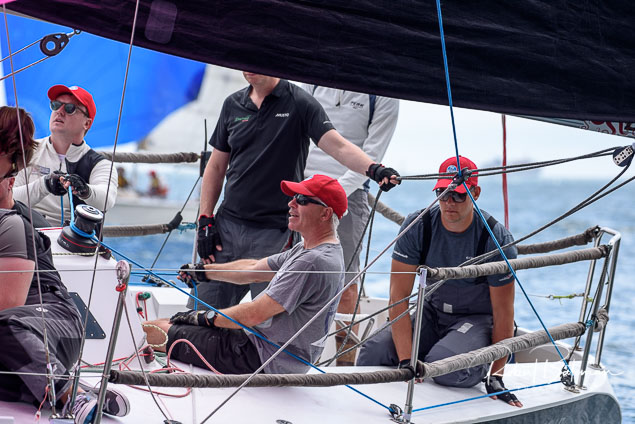
“We got a great start and that put us in clear air after the top mark, which really helped us position the boat for good downwind speed.” commented Harmony's Jonny Swan. “In Cork Harbour the boys did a great job on the manoeuvres, so it really came together well.”
In IRC Four, Rory Fekkes' Quarter Tonner Fn'Gr8 corrected out to win the Harbour Race to go top of the class. Denis Hewitt's Mills 37 Raptor (Royal Irish YC) scored their second win of Volvo Cork Week in the Coastal IRC Class, just ahead of Brian Twomey's 1720 Dark Side (Royal Cork YC), which showed terrific pace.
 Rory Fekkes' Quarter Tonner Fn'Gr8 from Carrickfergus Photo: Bob Bateman
Rory Fekkes' Quarter Tonner Fn'Gr8 from Carrickfergus Photo: Bob Bateman
“Great racing today, absolutely perfect conditions and a great course.” commented Raptor's, Denis Hewitt. “I have done this race so many times and always messed it up somewhere but we have some top local knowledge on board from Barry Rose and great sailors like Fintan Cairns. To be honest, I just did what they told me, and we hardly put a foot wrong." Denis Hewitt and Fintan Carin's Raptor Photo: Bob Bateman
Denis Hewitt and Fintan Carin's Raptor Photo: Bob Bateman
Aidan Heffernan's Dehler 36 Indulgence (SHSC) corrected out to win the Harbour Race in Non-Spinnaker IRC One, ahead of Broadhead, Collins & Stuart's Sigma 38 Persistance (Royal Irish YC), which leads the class with the lowest net point score for the regatta. Pat Vaughan's Sigma 33 Aramis (Royal Cork YC) was the winer of Non-Spinnaker IRC Two.
Volvo Cork Week continues tomorrow, Thursday 19th July, with three short sharp races scheduled for most of the IRC Classes, as well as the start of the One Design Southern Championships for the 1720 Class and the International Dragons.
Photo Gallery from today's in–harbour race by Bob Bateman below:
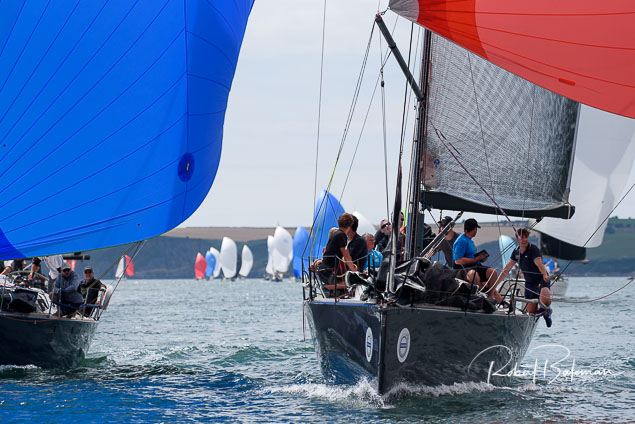













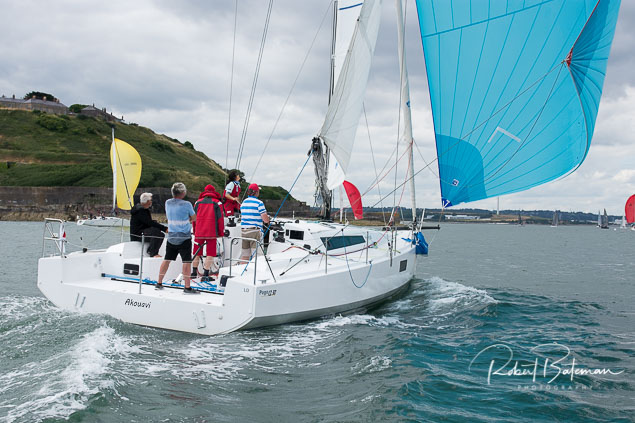
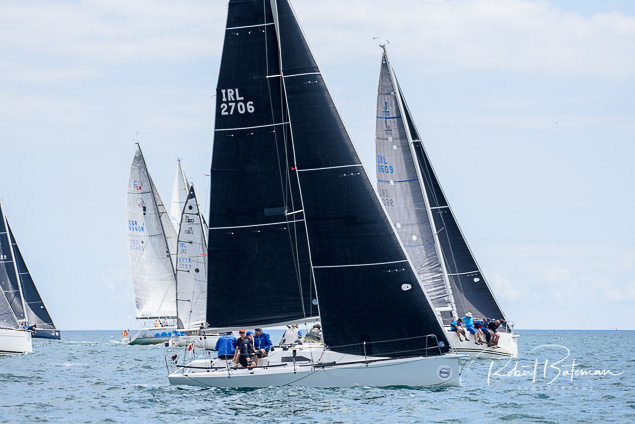

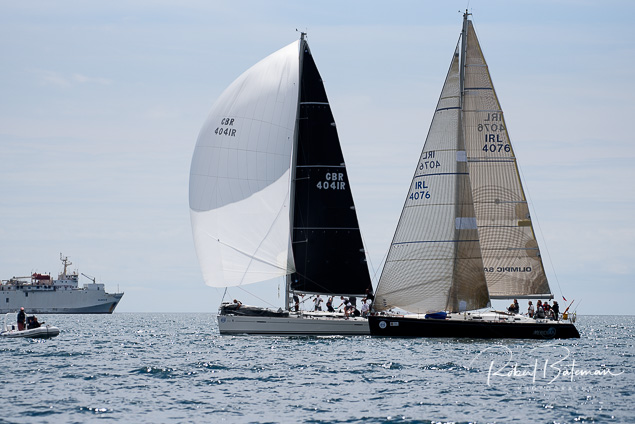

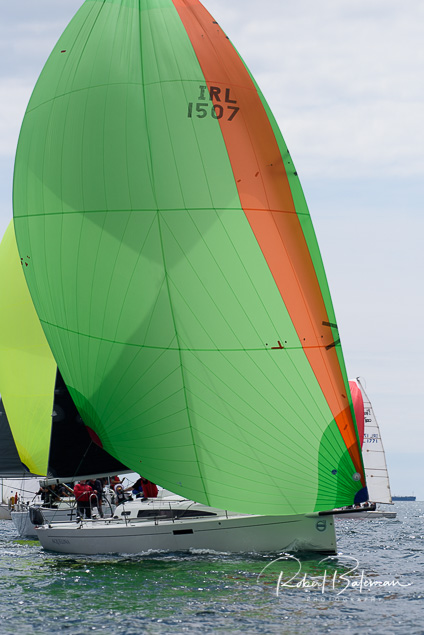
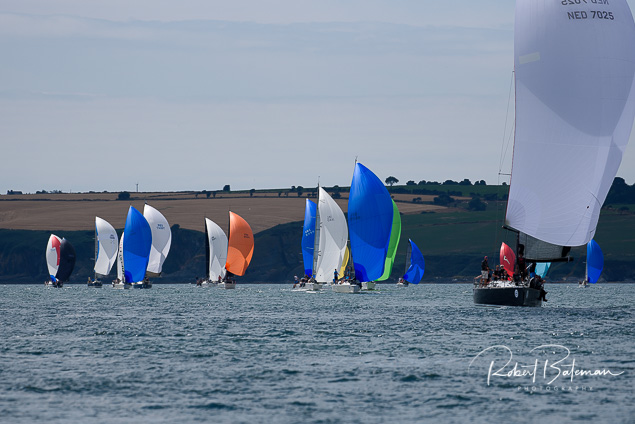
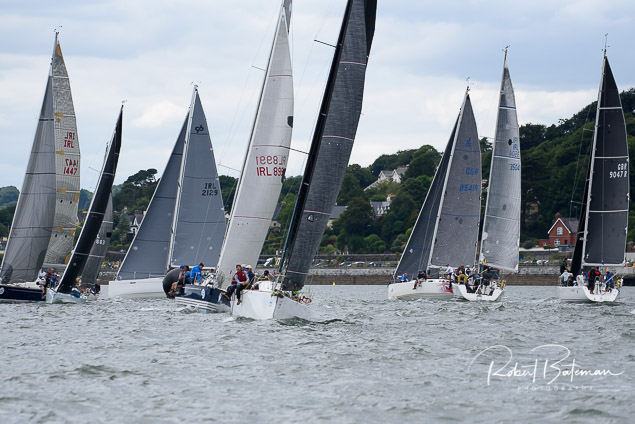

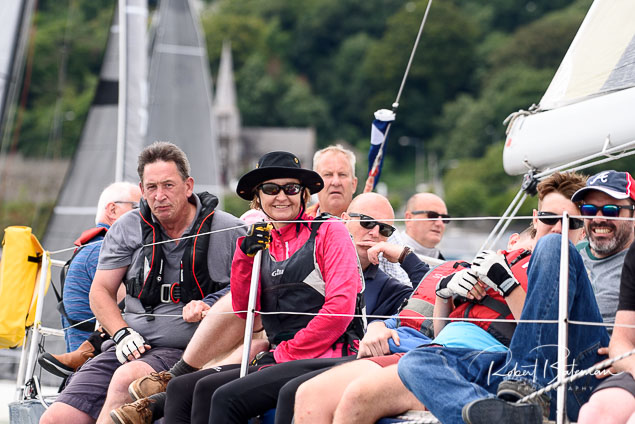

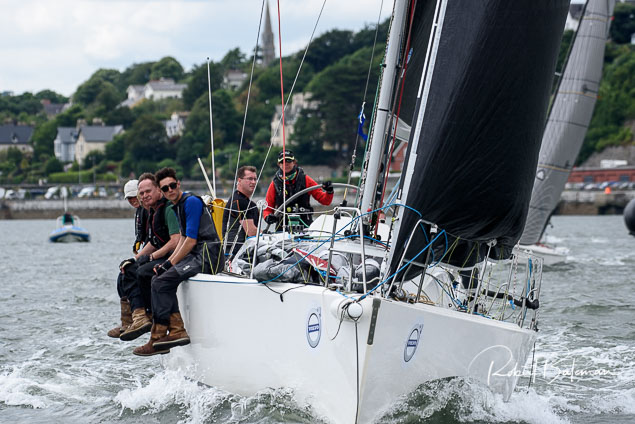

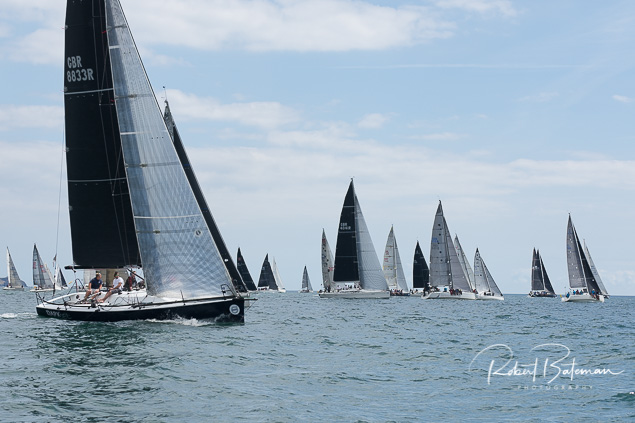

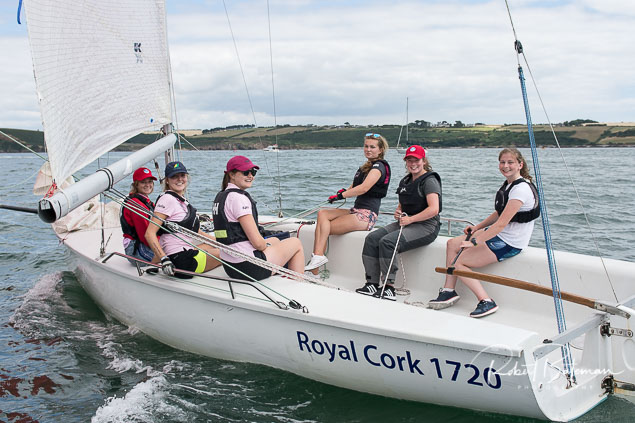
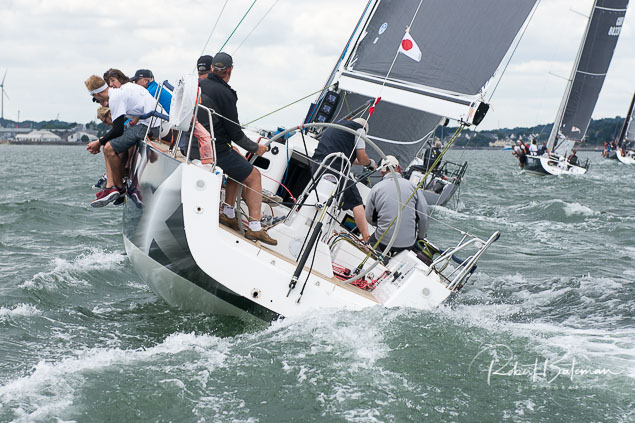
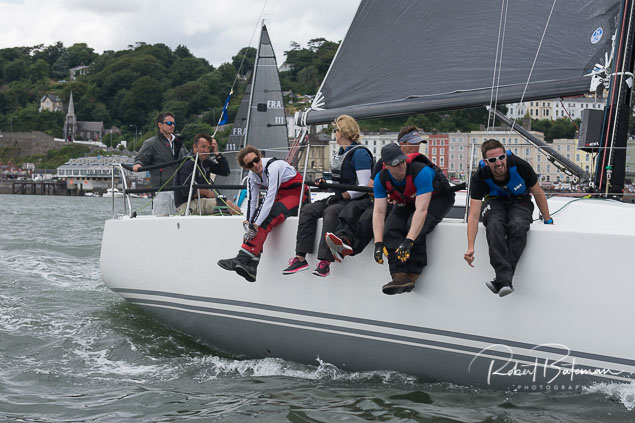
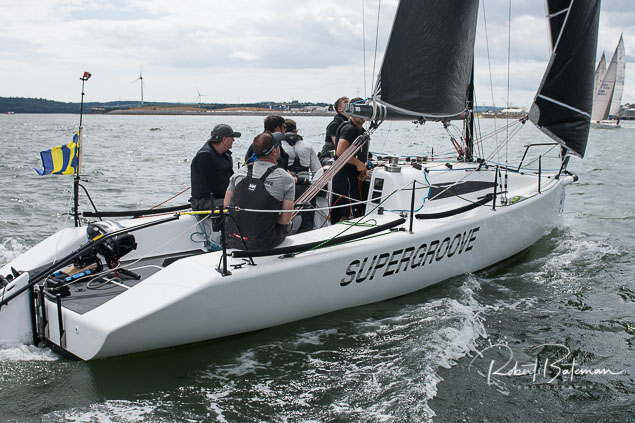
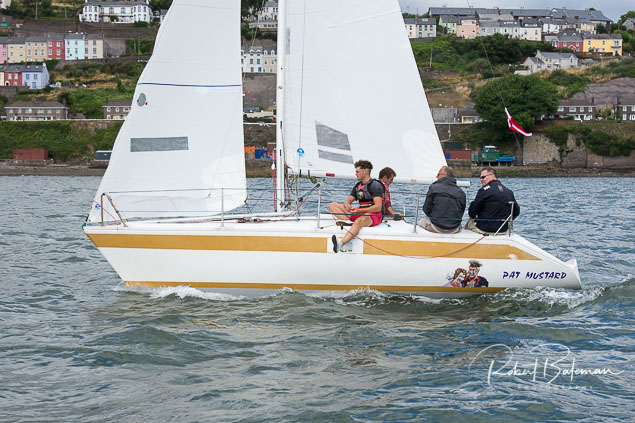
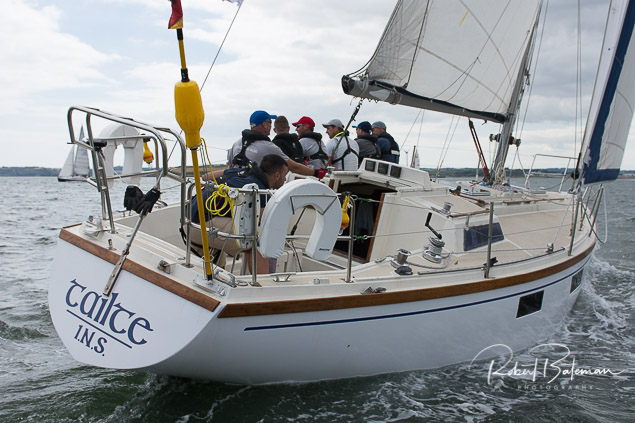

Full results here
Cork Week Day 2: Scotland's J/122 'El Gran Senor' Takes Class One Lead (Photo Gallery)
100 teams were competing inshore for the second day of Volvo Cork Week today.
A long coastal race, in good breeze along the south coast, produced fantastic racing for classes IRC one, two and three.
Scroll down for Tim Wright photo gallery below
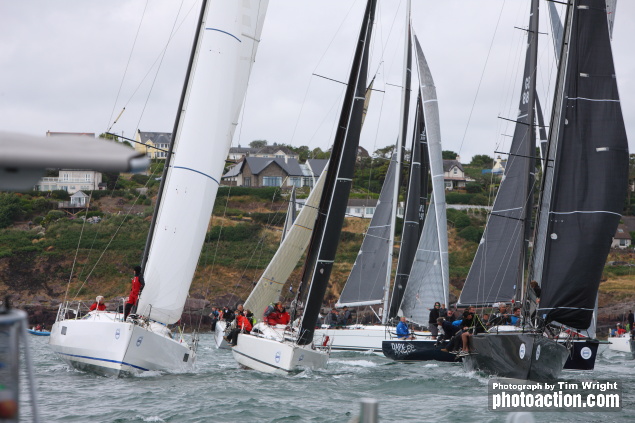 The IRC One Class One start. Photo: Tim Wright
The IRC One Class One start. Photo: Tim Wright
In IRC One, in the largest 'big boat' fleet of the season, Scottish and Northern Irish boats hold the top two positions in the nine boat fleet after two races sailed. Jonathan Anderson's J/122 El Gran Senor (Clyde Cruising Club) was today's winner and now leads overall. “I have been coming here for year's because it is always a good regatta,” commented Jonathan. “We were competing with the same team in Bangor a few weeks ago [where they were winners of IRC One – Ed], and we have a great crew. We have managed to beat Conor Phelan's Jump Juice in two races, which is a rarity, and there are plenty of well-sailed boats in the class.”
Second is race one winner, Jay Colville's Forty Licks with Greystones Sailing Club's Eleuthera skippered by Frank Whelan moving up to third overall.
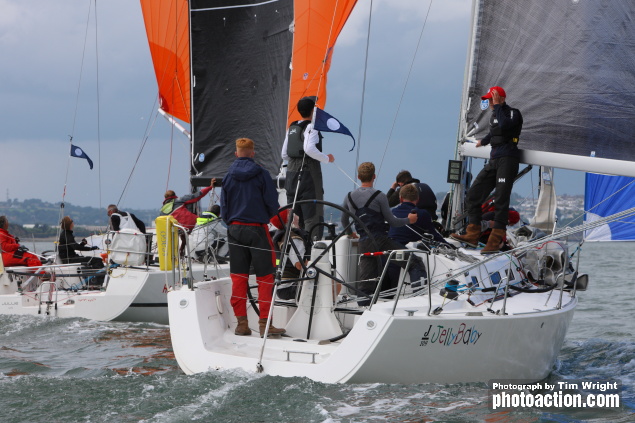 J109 Jelly Baby competing in Class Two Photo: Tim Wright
J109 Jelly Baby competing in Class Two Photo: Tim Wright
In IRC Two, Ronan Harris' J/109 Jigamaree (Royal Irish YC) corrected out to win by under a minute from yesterday's winner, Dunlop & Cox's J/109 Mojito (Pwllheli SC). “I am a Cork Week virgin.” admitted Ronan Harris. “I have a home in Baltimore and love to come and sail in West Cork. We are having a cracking battle with Mojito. We chose to duck them near the end of today's race, and it worked out for us, plus the crew did a good job getting us through the light airs patch near the finish.”
 IRC Class Three go downwind Photo: Tim Wright
IRC Class Three go downwind Photo: Tim Wright
In IRC Three, Ronan & John Downing's Half Tonner Miss Whiplash (Royal Cork YC) won Race 2, crossing the finish line just four seconds ahead of Wright, Cronnelly & DeNeve's Corby 27 Kodachi (Howth YC). “The team did a good job today, especially on the beat where we can suffer against some of the boats in our class.” commented Ronan Downing. “I would say that the wind was up for most of the race, but there was one light patch where we positioned the boat well to get through.” Volvo Cork Week Chairman Kieran O'Connell is one of the crew on Miss Whiplash, Kieran was excused from boat wash down today, only on account of providing a case of Heineken for the team!
Congratulations to all of today's class winners including: Rory Fekkes's Quarter Tonner Fn'Gr8 (Carrickfergus SC), Denis Hewitt and Fintan Cairns on the Mills 36 Raptor (Royal Irish YC), Broadhead, Collins & Stuart's Sigma 38 Persistance (Royal Irish YC), Donal & O'Mahony's Loch Greine (Royal Cork YC), and Patrick Doherty's Tailte (NSYS & RCYC).
Volvo Cork Week continues tomorrow, Wednesday 18th July, with the scenic and tactically challenging Cork Harbour Race, and the start of the One Design Southern Championships for the 1720 Class and the International Dragons.
Full results are here.
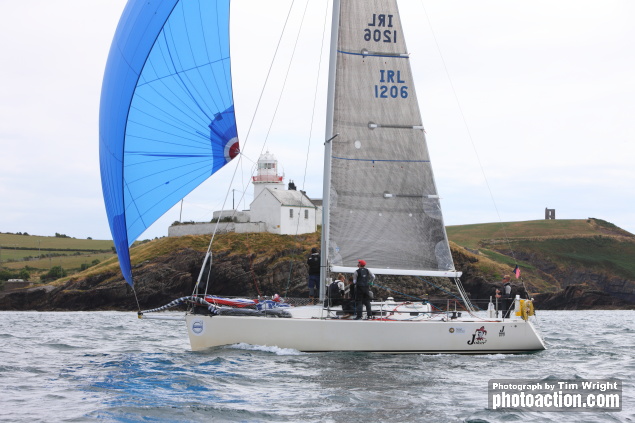
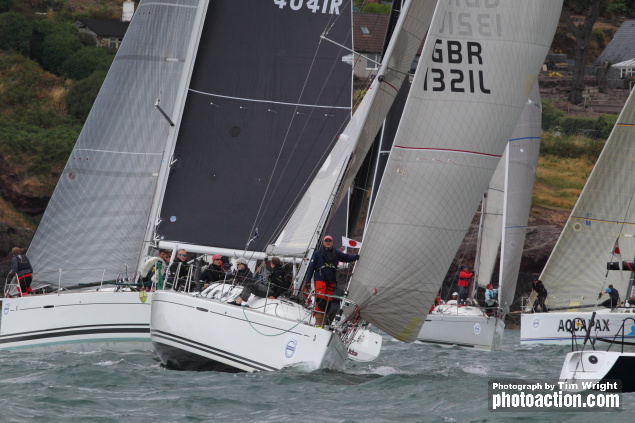
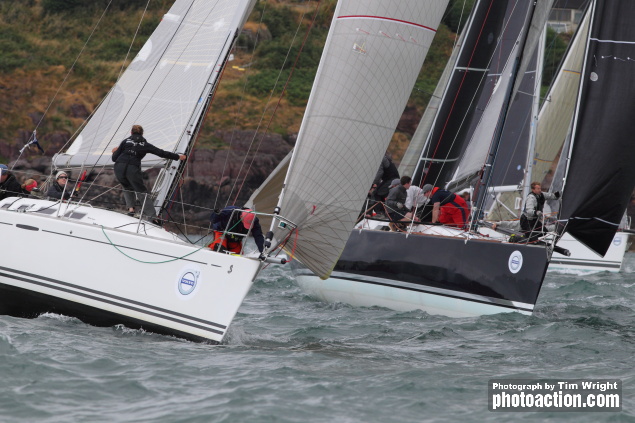


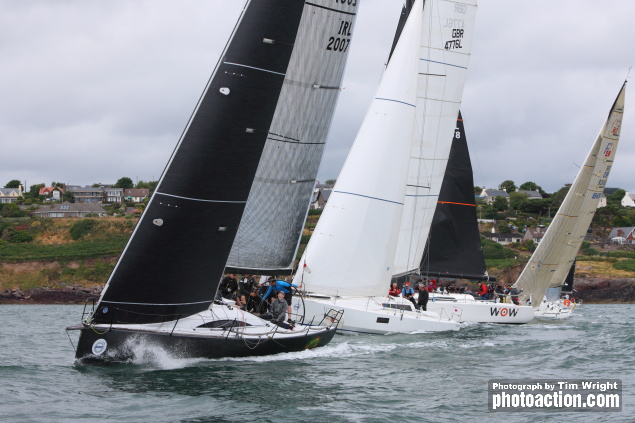
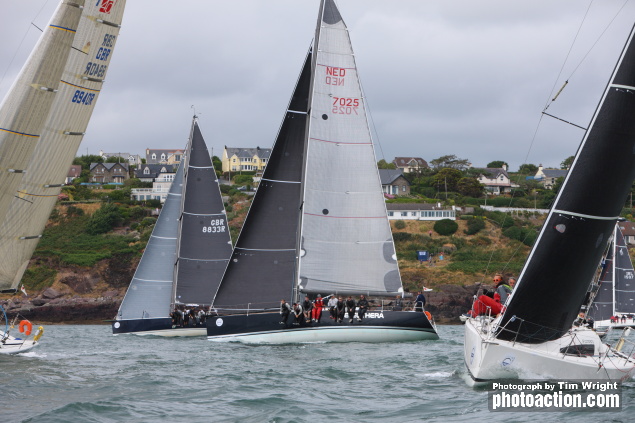
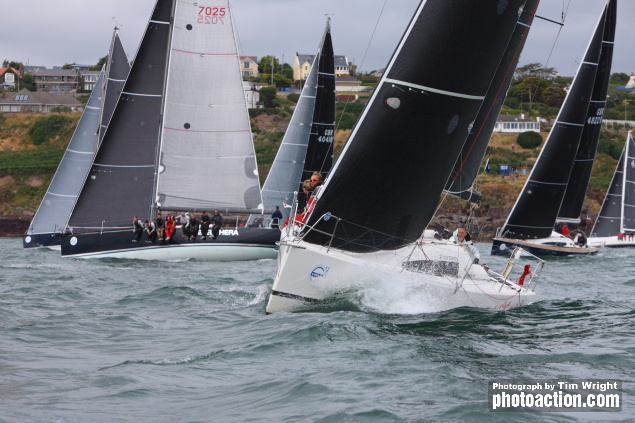


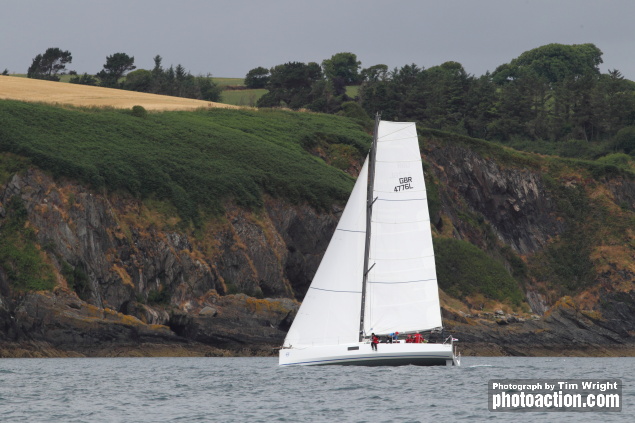


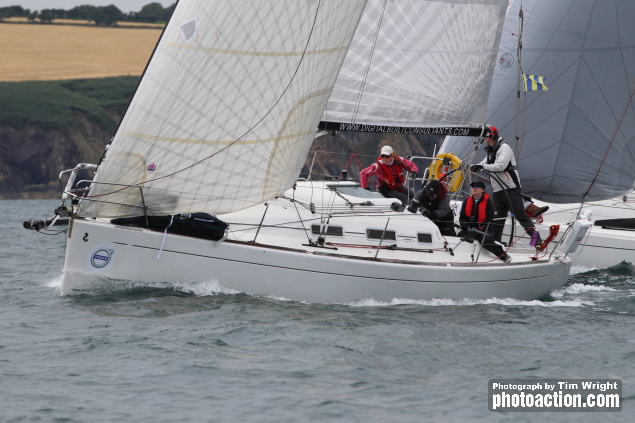
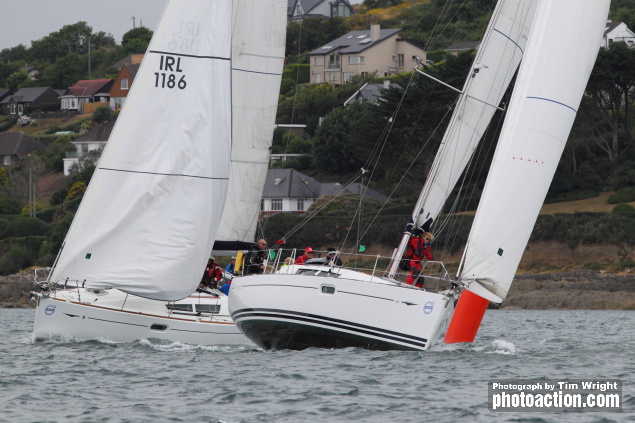
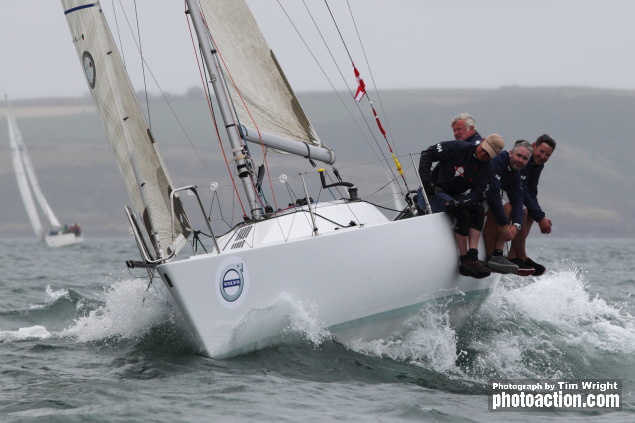
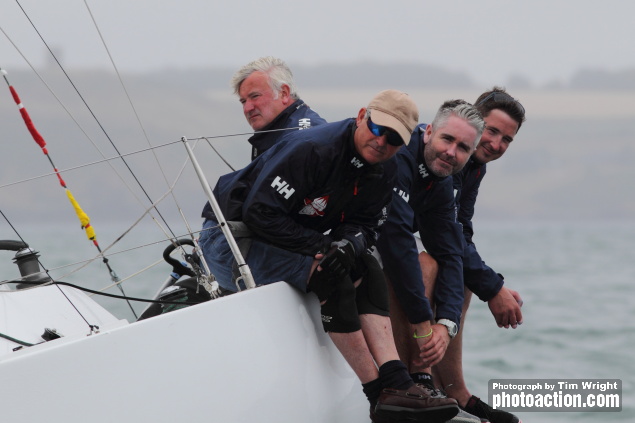

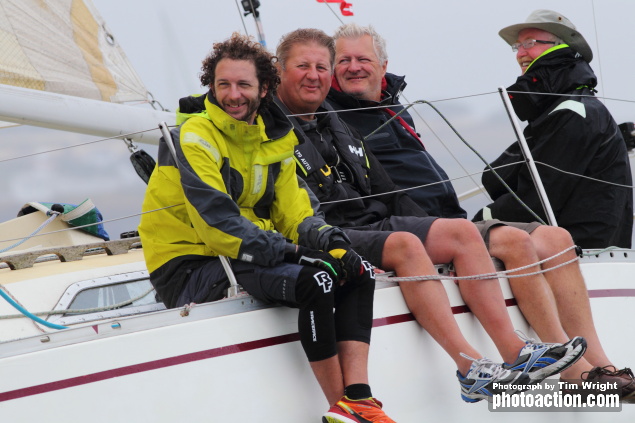

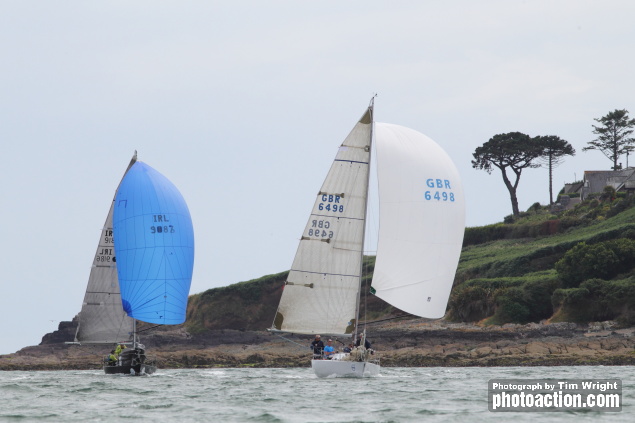
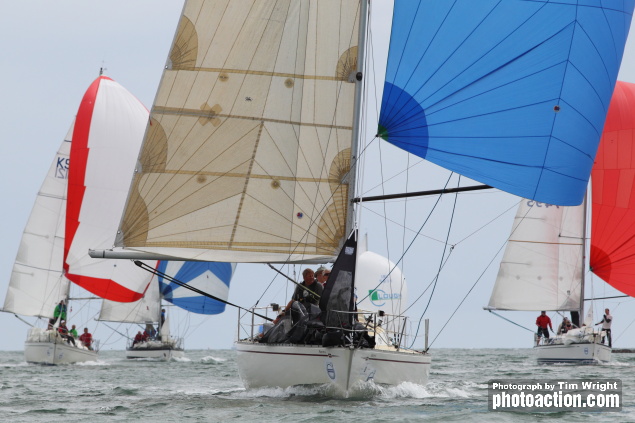
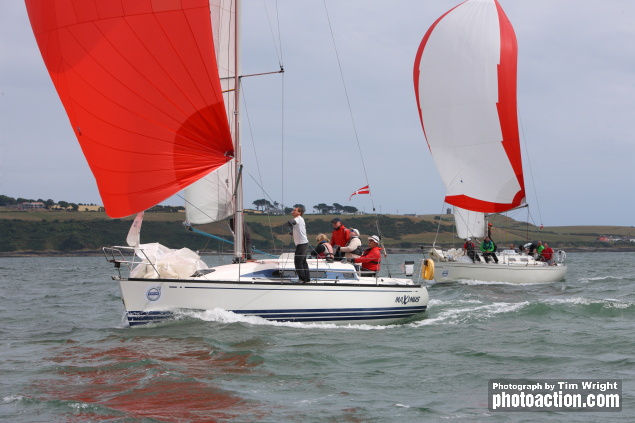
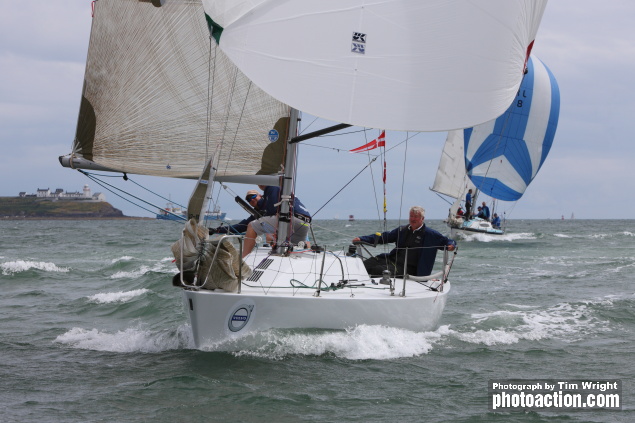
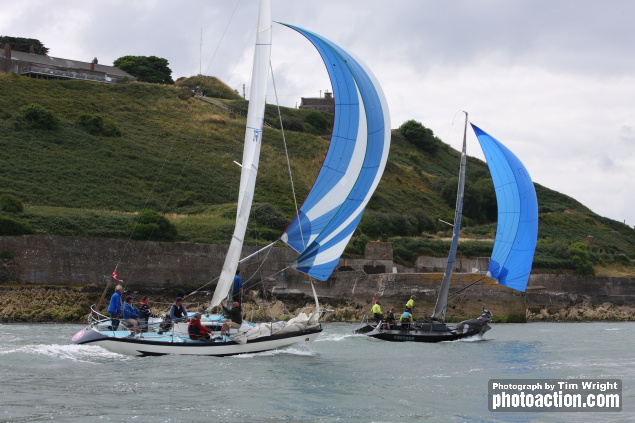
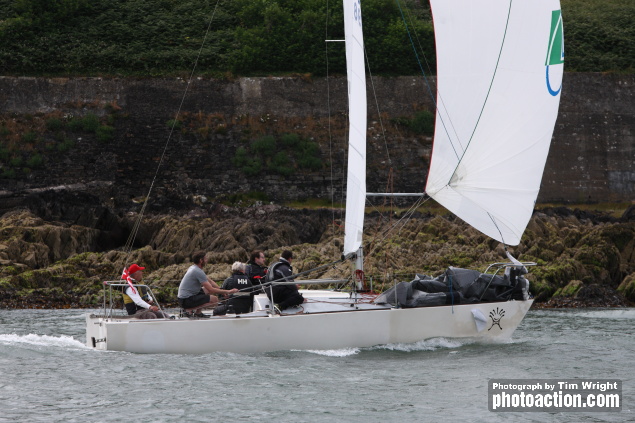
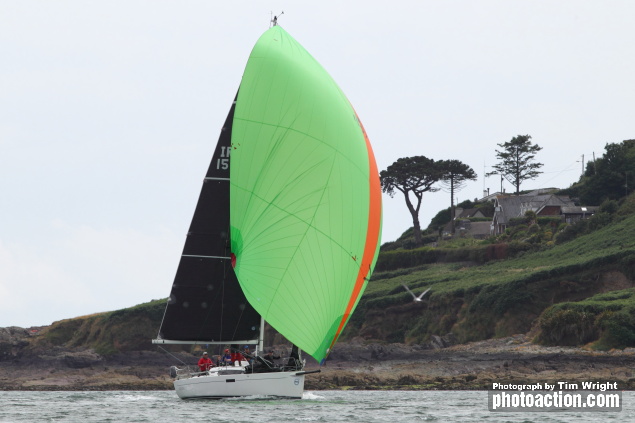
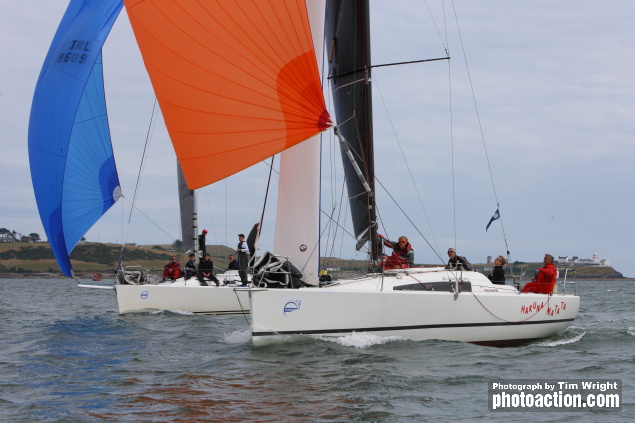





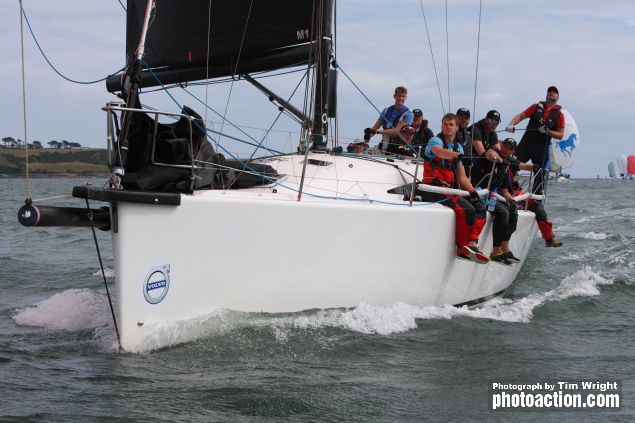
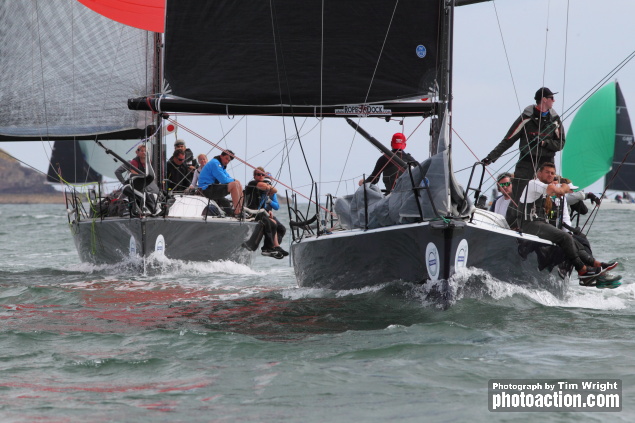

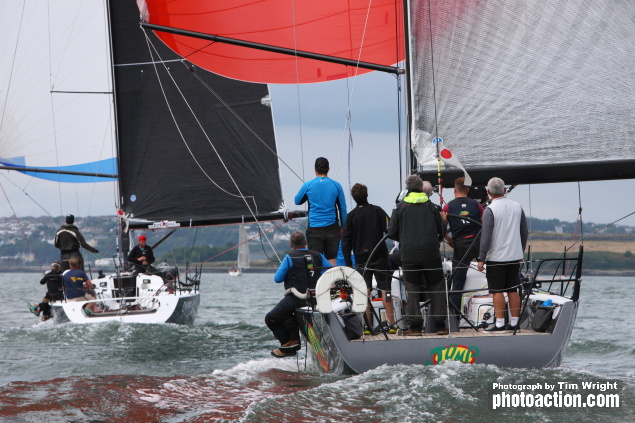

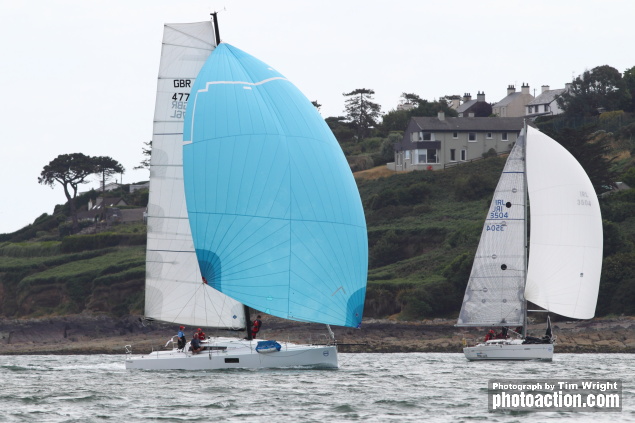
'Incredible'. That was the one-word reaction from Commandant Barry Byrne when he crossed the finish line off Roches Point in Cork Harbour this lunchtime, snatching line honours victory in the first race of the Beaufort Cup, the Cork Week series for Services personnel. Read Afloat.ie's earlier report here.
"I never dreamt that I could repeat 2016's success. It's an incredible feeling", the Irish Defence Forces skipper said having taken first blood with his talented crew against some very stiff competition.
"I never dreamt that I could repeat 2016's success"
In the podcast below, with Afloat.ie's Louay Habib, Byrne (who finished second in the Round Ireland Race earlier this month on the same boat), talks about how he knew he could win, if he could just hold on to the top pack in the 15–boat fleet.
Even with the early win in the bag that counts for double points, Byrne remains extremely cautious, however, given there are three days of inshore racing still to come.
Cork Week Day One Sailing Photo Gallery
Photographer Tim Wright captured the action on the water for the first day of Volvo Cork Week regatta yesterday. As Afloat.ie reported here, racing kicked off with an early start for the 17 teams racing in 'The Beaufort Cup', which set off on a 150-mile offshore race from Cork Harbour, bound for the Fastnet Rock and back to the finish.
Scroll down for the photos of the 120–boat fleet below. More of Tim Wright's work here.
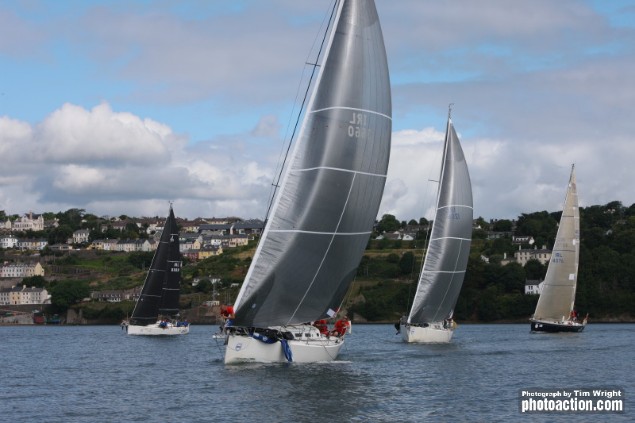
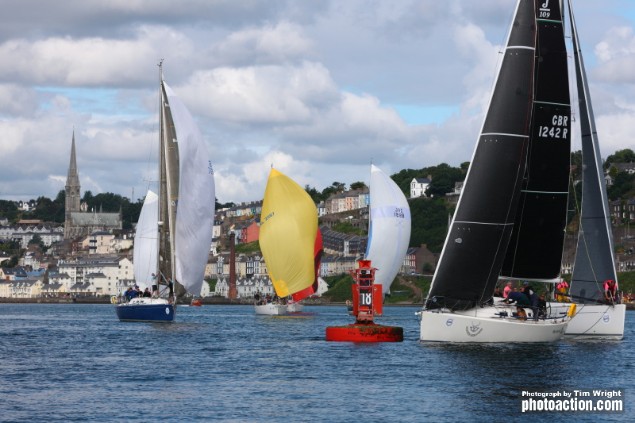
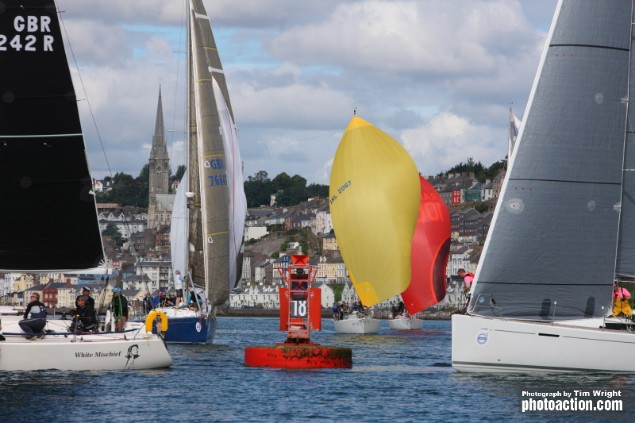

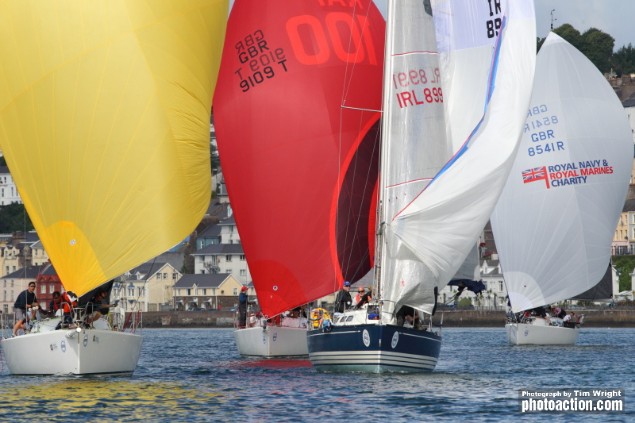
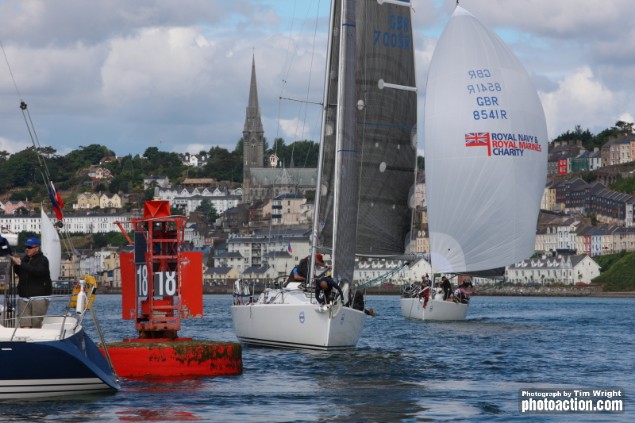

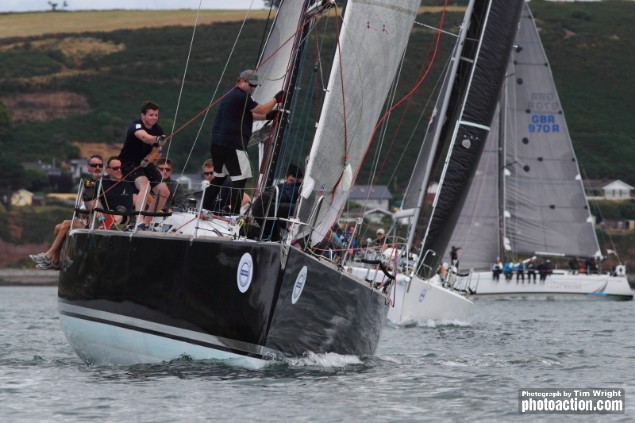
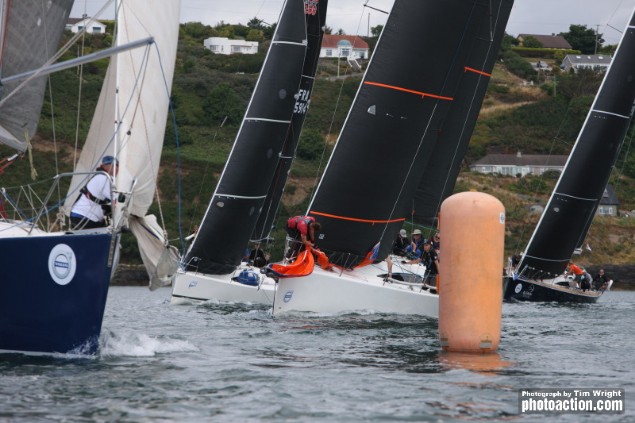

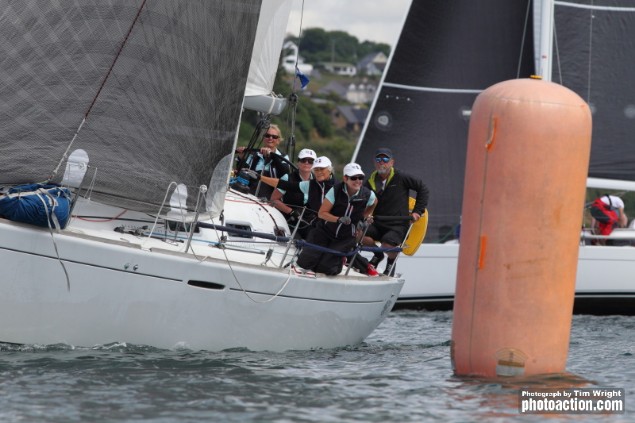
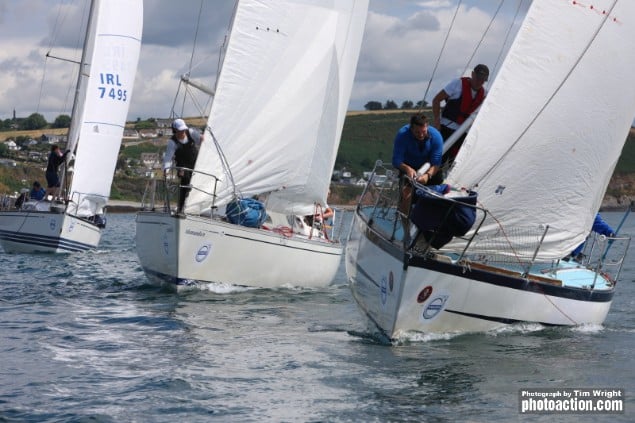

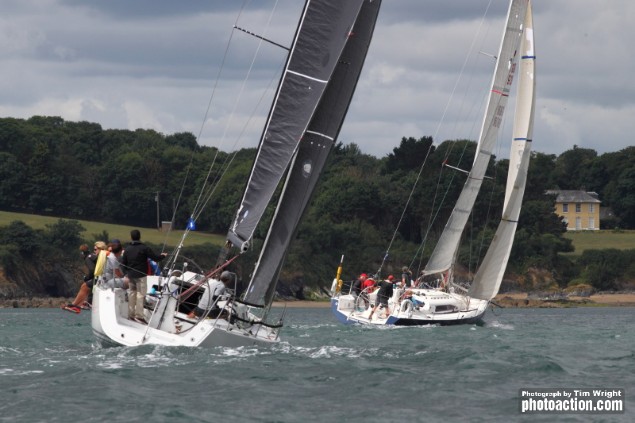
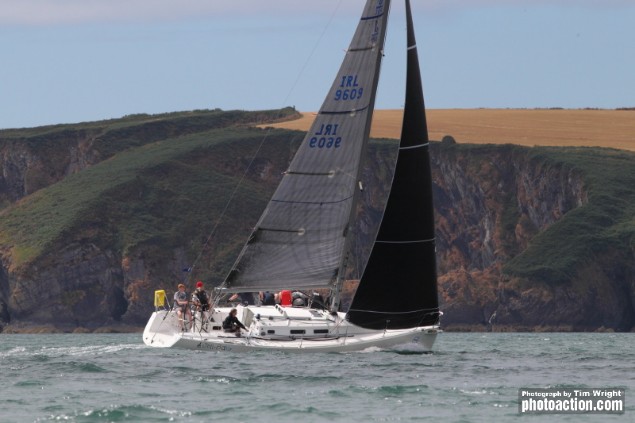


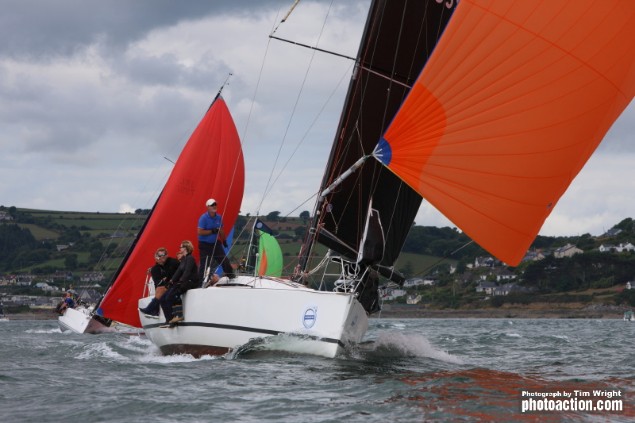

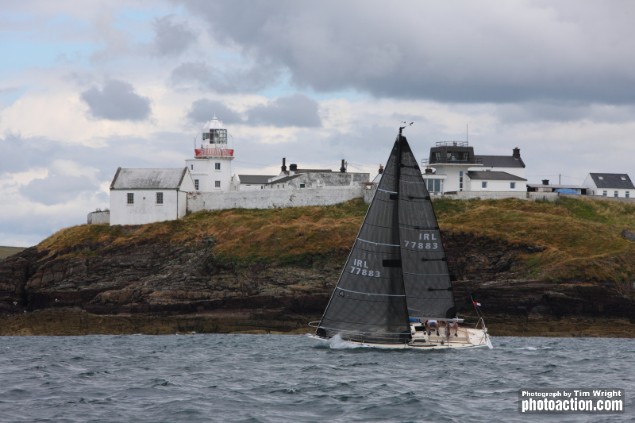
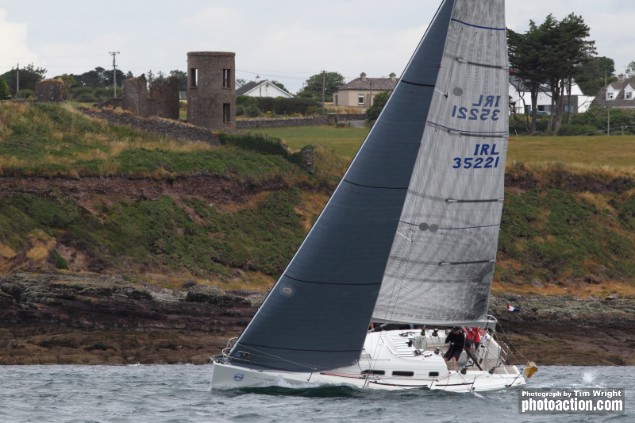
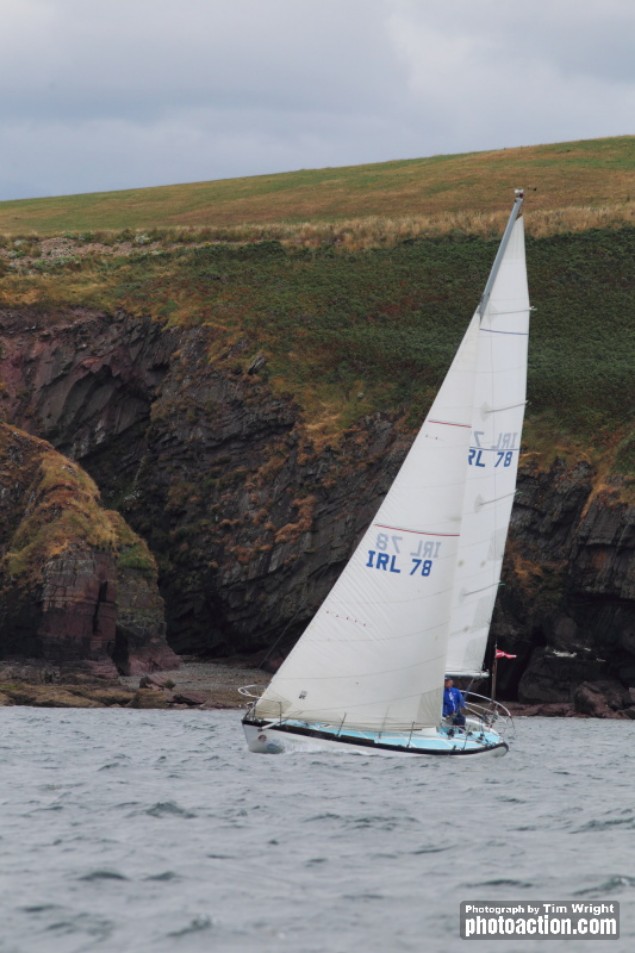

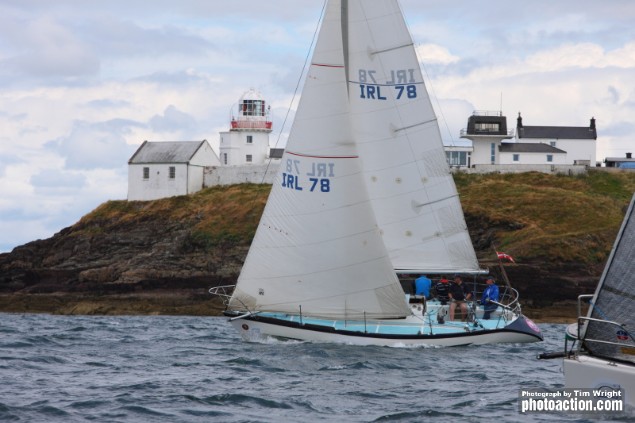
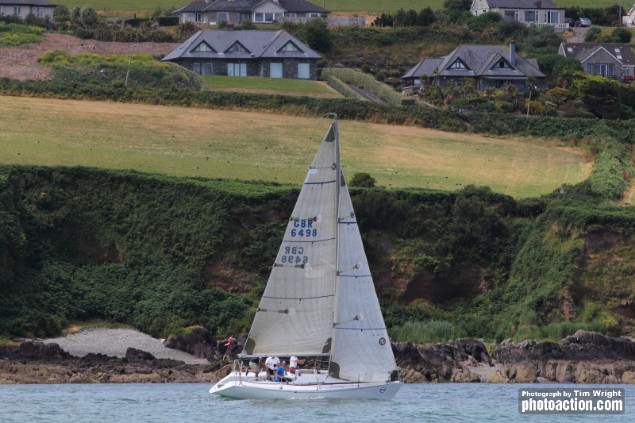

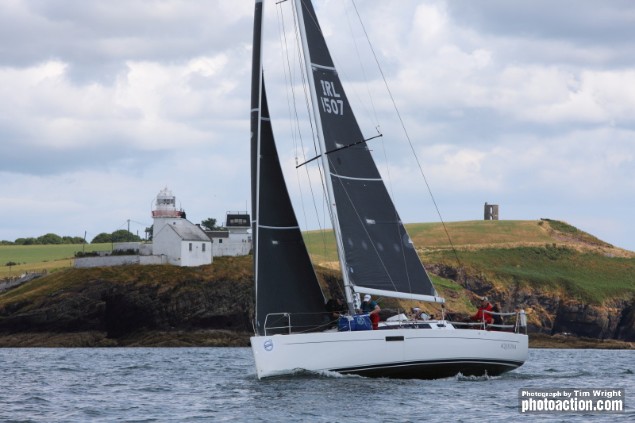



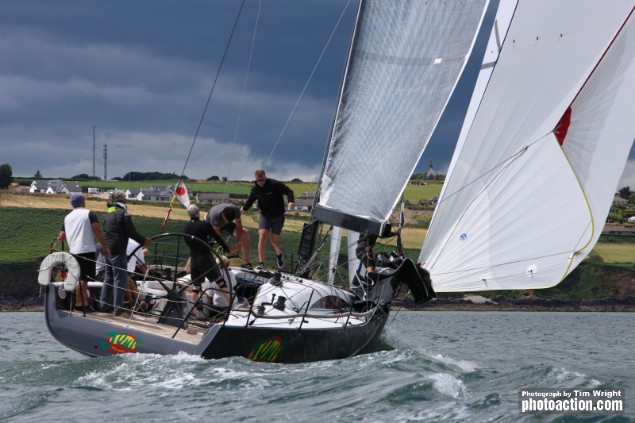
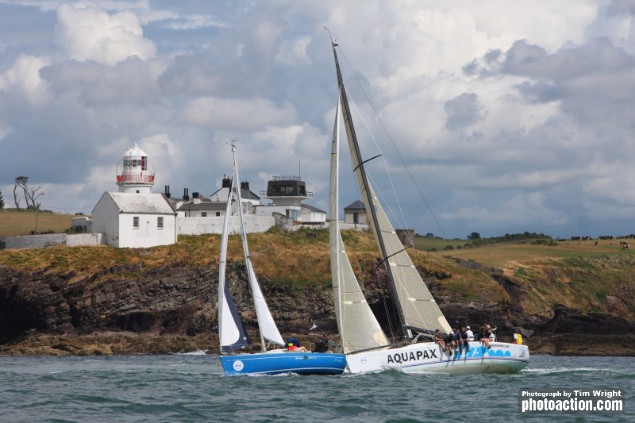
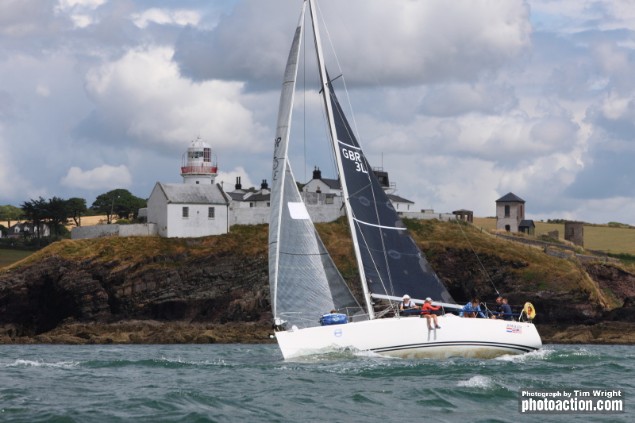

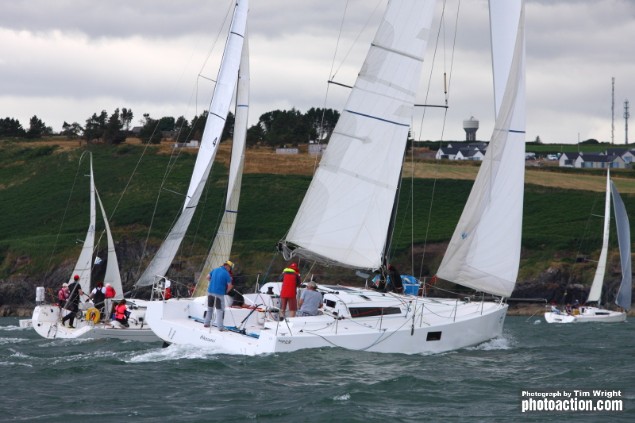
Cork Week Day 1: Simon Coveney Leads the Beaufort Cup Fleet Out of Cork Harbour for Fastnet Rock
Local sailing knowledge was a distinct advantage on the opening day of Volvo Cork Week where a fleet of 120 boats is in action until next weekend.
Juggling local tides and the light breeze on home waters, Tánaiste and Minister for Foreign Affairs Simon Coveney took an early lead in the overnight race to the famous Fastnet Rock in the Beaufort Cup for military and rescue crews.
The former Minister for Defence helped initiate the competition that has a €10,000 charity purse at stake. Appropriately enough, Coveney’s boat this week is named Jedi.
While Commandant Barry Byrne of the Irish Defence Forces is leading the title defence from the 2016 regatta on Joker 2, Irish Olympian Peter O’Leary is racing with the Baltimore RNLI team who were the early leaders in the 130 nautical-mile race.
"Irish Olympian Peter O’Leary is racing with the Baltimore RNLI team who were the early leaders in the 130 nautical-mile race"
That was until the fleet ran into light winds at Roche’s Point and Coveney popped into the lead. Close behind him, Vice Admiral Mark Mellett as Chief of Staff of the Defence Forces is on the crew of Merdian and hoping to edge into the lead.
As the Beaufort Cup crews sailed out of Cork Harbour, their route took the 15 teams straight past the start of the bigger event where four classes were beginning their own four-hour coastal race around the scenic Cork coastline.
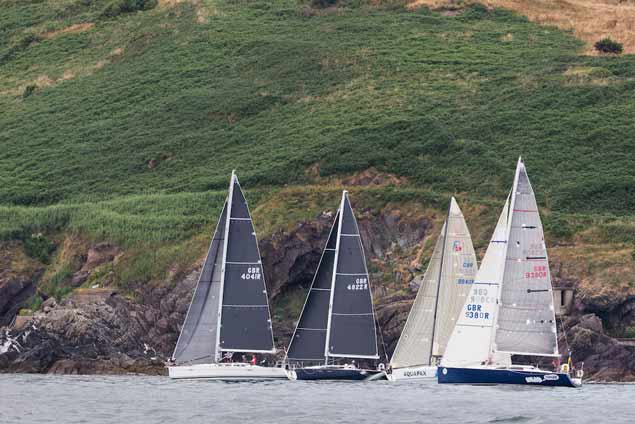 Forty Licks leads a group of IRC one boats along the shore in the first race of Cork Week Photo: Cork Week/David Branigan
Forty Licks leads a group of IRC one boats along the shore in the first race of Cork Week Photo: Cork Week/David Branigan
While the light wind made for a tricky start, the clouds soon pulled back and a perfect breeze kicked in as spinnakers were hoisted close to the beach at Fountainstown for a spectacular-run eastwards to Power Head.
However, that race ended as it began with tricky conditions at the finish off Roche’s Point where once again, local knowledge was an advantage.
That played into the hands of Kieran Collins and his family crew on Coracle IV who won the day in Class 3 ahead of Paul and Deirdre Tingle’s Alpaca.
With nine countries and 28 clubs from around Ireland and the Irish Sea region represented in the fleet, visitors are also featuring in the results, notably Jay Colville’s Forty Licks from East Antrim, winner of Class One.
In IRC One, Frank Whelan's Grand Soleil 44 Eleuthera (Greystones Sailing Club) got the best start above to lead the fleet on the beat along the shore. However, on the return to Weaver's Point the breeze started to fade and the lower IRC rated boats made up their time. Jay Colville's First 40 Forty Licks (East Down YC) won the race in IRC One by just 26 seconds on corrected time from Jonathan Anderson's J/122 El Gran Senor (Clyde Cruising Club). Performance Yacht Charter's Grand Soleil 43 Jua Kali (RORC) was third.
Great atmosphere back at the club now after a fantastic day out on the water. Results coming soon! #Cork #sailing #VolvoCorkWeek pic.twitter.com/EGX3UkDbUi
— Volvo Cork Week (@corkweektweet) July 16, 2018
Racing continues on Tuesday with more coastal courses before Wednesday’s mass start of the full fleet that plans to sail past Cobh and its spectacular hillside backdrop that is the perfect grandstand for this regatta.
Full results click here
Cork Week Joins International Race to Protect Our Seas
Volvo Cork Week, taking place in Crosshaven, County Cork, July 16th – 21st, has announced its collaboration with An Tasice's Clean Coasts programme and the MaREI Centre for Marine and Renewable Energy at University College Cork as they join the race to restore ocean health with Sailors for the Sea’s Clean Regattas programme.
The ocean is in crisis, every year, 8 million metric tons of plastic enters the ocean from land each year and 40% of the oceans are heavily affected by human activity, including pollution, overfishing and destructive fishing practices, and the loss of coastal habitats.
Clean Regattas is a certification system that enables sailors to protect their local waters with 25 Best Practices that make sustainability approachable and easy. This program is an effort by Sailors for the Sea raising the bar for environmental sustainability and ocean health around the world.
“Our collaboration with Clean Coasts on supporting Volvo Cork Week in their efforts to run a cleaner, greener regatta represents an important opportunity for us to engage the public on the issue of marine litter and tackling single use plastics” commented Aoife Deane, Communications and Public Engagement Manager, MaREI Centre.
Over the 40 years of its history, Volvo Cork Week has cemented its reputation as a world-class sailing experience, flavoured with the key ingredients of friendly competition, varied sailing and excellent entertainment. With over 110 boats from around the world set to compete in this year’s event, Volvo Cork Week is also dedicated to protecting the waters upon which they sail. According to Regatta Chair, Kieran O’Connell, “The Royal Cork Yacht Club is committed to protecting our waters and has implemented a number of Clean Regattas Best Practices to reduce our environmental impact, including the provision of reusable water bottles and hydration stations, compostable food and coffee containers, paper straws, energy conservation, online registration forms, and an information campaign on reducing single use plastics and marine litter.”
Volvo Cork Week 2018 Opens at Royal Cork Yacht Club
Tánaiste and Minister for Foreign Affairs and Trade, Simon Coveney – who will also skipper a yacht in this week's regatta – has officially launched Volvo Cork Week 2018 at the Royal Cork Yacht Club in Crosshaven this afternoon.
The biennial sailing event based around the coast of County Cork and inside Cork Harbour, runs this year from today to next Saturday 21st July.
The festival of sailing has been billed as an 'Aquatic Tourism Highlight for Cork Harbour' and has attracted a fleet of over 100 boats from eight different countries. It follows a change to its format as RCYC's Kieran O'Connell describes to Afloat.ie's Tom MacSweeney here.
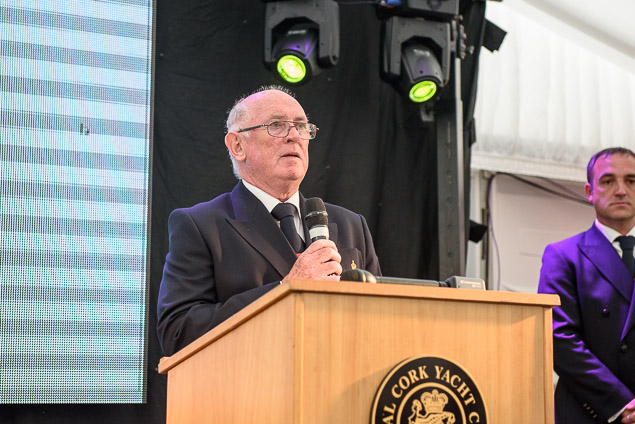 RCYC Admiral Pat Farnan welcomes competitors to Crosshaven Photo: Bob Bateman
RCYC Admiral Pat Farnan welcomes competitors to Crosshaven Photo: Bob Bateman
On the water, the July regatta has attracted one of the largest big boat regattas for Class Zero/One boats of the season with up to ten 40-foot boats competing as mentioned by Afloat.ie here.
Another highlight will be the Beaufort Cup in which the Tanaiste will compete against some of the world's top Defence forces sailing teams including the US Marines and British Army.
120 teams from eight different nations will compete at Volvo Cork Week, enjoying up to six days of racing in the Celtic Sea and Cork Harbour on a variety of courses. This year, the biennial regatta organised by the Royal Cork Yacht Club is celebrating 40 years and Volvo Cork Week continues to provide fantastic racing, superb award-winning facilities and great fun ashore.
 Irish Sailing President Jack Roy with Cork Week Chairman Kieran O'Connell and David Thomas, MD of Volvo Car Ireland Photo: Bob Bateman
Irish Sailing President Jack Roy with Cork Week Chairman Kieran O'Connell and David Thomas, MD of Volvo Car Ireland Photo: Bob Bateman
Volvo Cork Week provides racing for yachts racing under IRC, including the highly popular non-spinnaker and coastal classes. Once again Volvo Cork Week will include an offshore element to the Beaufort Cup with a race around the iconic Fastnet Rock. All competitors will take part in the scenic yet tactically challenging Cork Harbour Race. For 2018, Volvo Cork Week will also feature Southern Championships for One Design Classes: 1720 Class, the International Dragon Class, and the SB20 Class.
 Cork Week Launch in the marquee Photo: Bob Bateman
Cork Week Launch in the marquee Photo: Bob Bateman
“There have been big changes for the format of this year's regatta, splitting up into a number of different series. This was done to ensure that we were catering for everyone's needs.” commented Volvo Cork Week Chairman, Kieran O'Connell. “We have teams from 32 yacht clubs and entries are up 30% on 2016, which shows that the new format is working for people.”
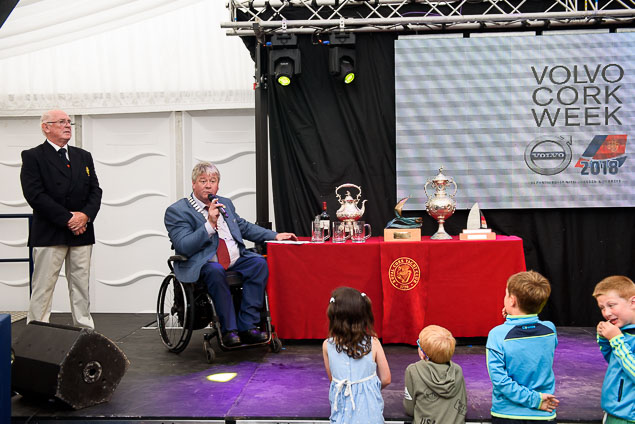 Mayor of Cork County Patrick Gerard Murphy Photo: Bob Bateman
Mayor of Cork County Patrick Gerard Murphy Photo: Bob Bateman
The Beaufort Cup starts with the challenging Fastnet Race on Monday 16th July followed by three days of short course racing to test the all round ability of the teams. Beaufort Cup entries feature 50% of the crew coming from active personnel in the Armed Forces and Emergency Services. 17 teams will be racing from Ireland, Great Britain and the United States of America. The inaugural Beaufort Cup was held as part of the 2016 edition of Volvo Cork Week, Commandant Barry Byrne skippered the Irish Defence Forces to victory, and the team is back to defend their title. The winner will once again nominate a charity to win €10,000.
“The Beaufort Cup is fully part of Volvo Cork Week, and any team competing is eligible for the boat of the week.” commented Barry Byrne. “The Beaufort Cup is challenging, and a test in a real environment of leadership, team work and resilience, which are all values of the services we represent. The inter-services rivalry is very exciting, something special that raises the level of the competition, whilst still keeping the friendly rivalry and banter, which is brilliant. The field has really toughened up this year, everyone competing has done their best to raise their game. It is a great fleet and the fastest growing element of Volvo Cork Week.”
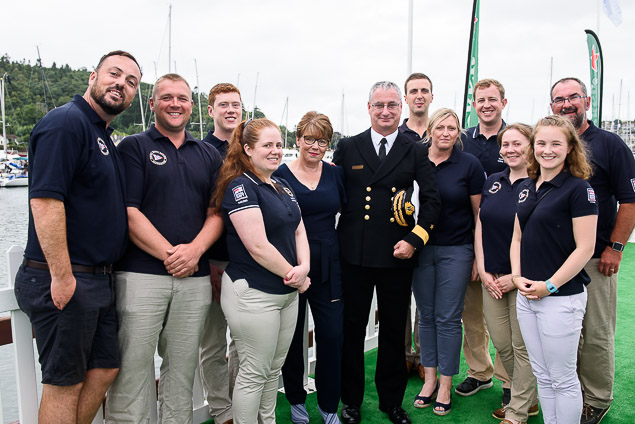 The Royal Navy Sailing Team with the Commodore of the Irish Navy Photo: Bob Bateman
The Royal Navy Sailing Team with the Commodore of the Irish Navy Photo: Bob Bateman
Many of the teams racing at Volvo Cork Week have come from overseas. Tony Ackland's Swansea YC team racing Dark Angel will be defending their IRC One title. In IRC Two, Samantha Hickey's team racing Beneteau 36.7 Altair are from the Newcastle Cruising Yacht Club of Australia. James Angus' will be racing in the 1720 Class with a team from the Dubai Offshore Sailing Club. For Volvo Cork Week, Performance Yacht Racing's Andy Middleton, will skipper British Grand Soleil 43 Jua Kali, with an international crew from England, Wales, Scotland, Holland and Poland. The team delivered the boat from the Isle of Wight to Crosshaven, and enjoyed a pint at the Royal Cork Yacht Club upon arrival.
“All of the crew bar one have sailed with Performance Yacht Racing in the past at various events but for all of them this is the first time they have been to Volvo Cork Week. “The delivery was very easy and we have a few days to get Jua Khali into race mode for the regatta.” commented Andy Middleton. “This will be my first regatta ever.” smiled Margriet van Lidth, who comes from Amsterdam. “I love sailing and decided that this should be my first regatta experience.”
The event village at the Royal Cork Yacht Club was the centre for fun and laughter for the regatta. On Sunday 15th July with a Family Fun Day with the Royal Cork Yacht Club open to the public to enjoy the superb facilities at the clubhouse in Crosshaven.
There will be a variety of live music every night with a spectacular fireworks display on Friday 20th July with one of Cork's finest Indie Pop Funk Bands; Gerald Ahern & The Midnight Sons.
Read WM Nixon's Cork Week 2018 Preview here. Read all Afloat.ie's Cork Week coverage here.
 Tánaiste and Minister for Foreign Affairs and Trade, Simon Coveney addresses the guests and below with one of the highly-prized Cork Week Trophies Photo: Bob Bateman
Tánaiste and Minister for Foreign Affairs and Trade, Simon Coveney addresses the guests and below with one of the highly-prized Cork Week Trophies Photo: Bob Bateman